PITCHCARE

Ancient Trees and their Biodiversity Value


Ancient Trees and their Biodiversity Value
GLOBAL DEVELOPMENTS ARE OPENING DOORS FOR BRITISH BUSINESSES AND TURFCARE PROFESSIONALS TO ROLL OUT UK TURF STANDARDS INTERNATIONALLY...
It’s time to embrace robotic mowing weather corner: light levels
...WE LOOK HOW GOVERNING BODIES AND INFLUENTIAL INDIVIDUALS ARE PROGRESSING STANDARDS OF TURFCARE GLOBALLY
Fungi:Achallengein turfmanagement



Editor Kerry Haywood

At last, there seems to be some let up for turfcare managers with dry spells across the country, and with it set to continue throughout November, autumn conditions are favourable... let’s hope I haven’t just jinxed it though!
I encountered many discussions at Saltex surrounding the topic of recruitment, and whilst dialogue and seminar sessions are raising awareness, when we walk away from them what is actually being done? That said, whilst watching an FA Cup first round match recently, it was encouraging to hear commentators speak highly of the pitch at Sutton United, and this kind of exposure can only help raise awareness of our industry and the work involved.
On this subject, I sat down at Saltex with Scott Reeves, BIGGA Head of Membership, who is passionate about the industry and shaping the offerings of the Association to better support greenkeepers and the wider turfcare community. Their survey provides a genuine opportunity for everyone (members or otherwise) to have a voice and shape the profession. You only have until 23rd November though, so head to online1.snapsurveys.com/BIGGA5 for your chance to win a £500 Amazon voucher for taking the 10-minute survey!
The UK turf industry is considered one of the best in the world, and in our cover article (starting on page 8), we look how governing bodies and influential individuals are progressing standards of turfcare globally. There are some great insights from Dean Gilasbey, Alan Ferguson, Dave Roberts and FEGGA.
Also in this issue, industry expert Mark Hunt discusses light levels (page 32) and compares PAR (Photosynthetically Active Radiation) light from this year with the same time period in 2023 and 2022. The results are pretty interesting!
Our Spotlight on Science feature focuses on fungi and how fairy rings underscore particular challenges and considerations essential in modern turf management (page 34)
Happy reading and, dare I say, happy christmas!
Kerry
t: 07973 394037
e: kerry.haywood@pitchcare.com



Allscott Park, Allscott, Telford. Shropshire TF6 5DY t: 01902 440270





No part of this publication may be reproduced without prior permission of the publisher. All rights reserved. Views expressed in this publication are not necessarily those of the publisher. Editorial contributions are published entirely at the editor’s discretion and may be shortened if space is limited. Pitchcare make every effort to ensure the accuracy of the contents but accepts no liability for its consequences. Images are presumed copyright of the author or Pitchcare, unless otherwise stated.
Printed by Buxton Press
Advertising TSP Media t: 01952 234000




Global
18
Extensive three-year improvement plan at Blackmoor Golf Club.
Grassroots grounds staff
it is like working on a budget.
Innovations have trimmed away the limitations of robotic tools, making it the perfect time to invest in this new future-proofed technology.
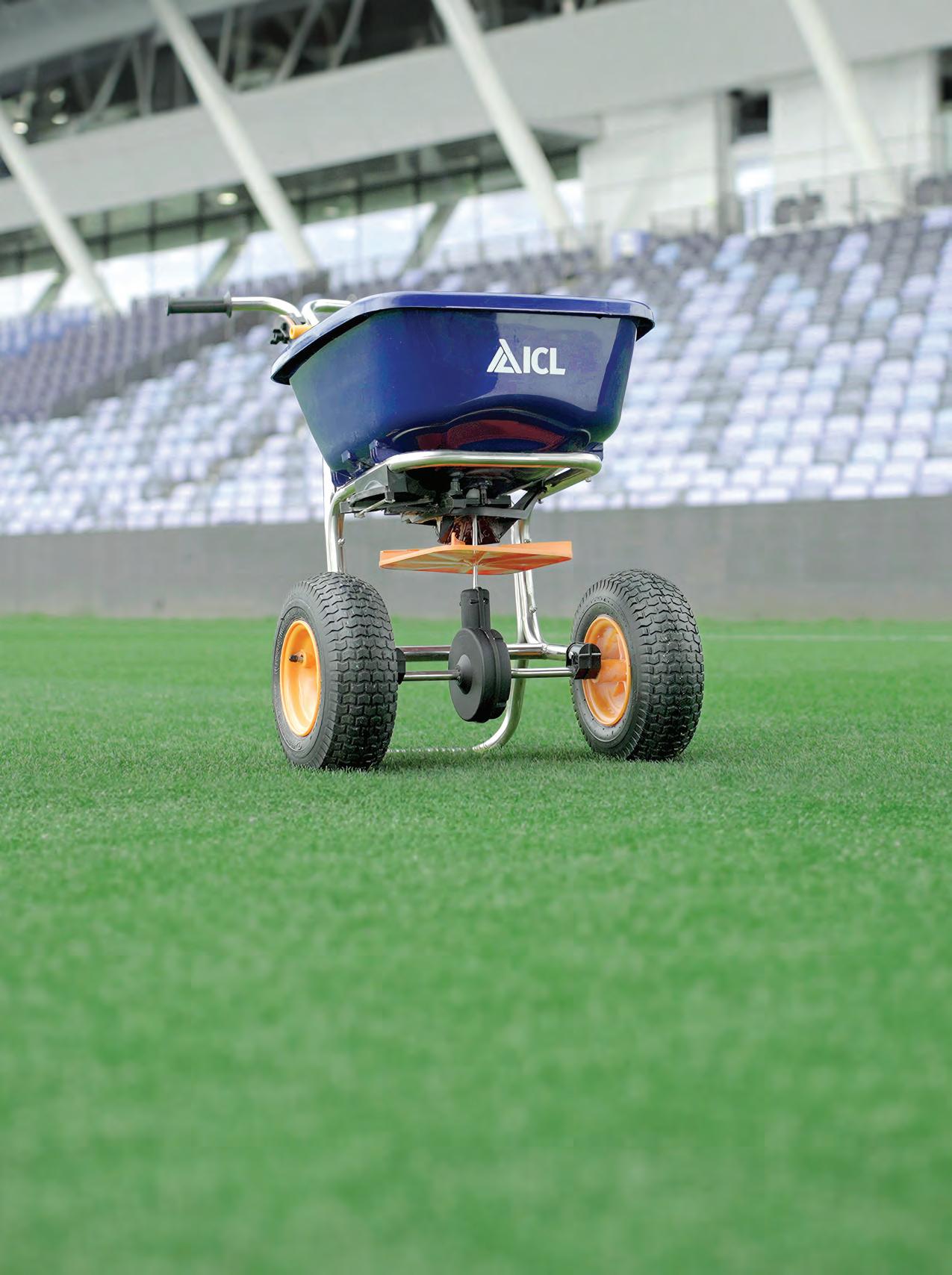














A professional rotary spreader designed for precision and reliability. With SmartSpread™ technology and a durable stainless-steel frame, it ensures even application and long-lasting performance.
www.icl-growingsolutions.uk | www.icl-growingsolutions.ie





BIGGA has launched a survey that invites all greenkeepers - whether members of the association or otherwise - to share their opinions on the structure and role of the association itself.
The survey is intended to ensure that greenkeepers are at the heart of plans to develop the activities and structure of BIGGA and ensure it is well-placed to meet the challenges of future years.
The survey is the first step in a consultation phase that is being undertaken in collaboration with Sporting Insights, the leading sports marketing research organisation.
The questionnaire will give all greenkeepers the opportunity to have their say about BIGGA itself, whether positive or otherwise. Questions will cover the BIGGA membership offering, the value of benefits and initiatives that are currently available and how these might change. There will also be questions on membership categories, the role of volunteers and how BIGGA advocates for its members within the industry.
Those who complete the questionnaire will be entered into a draw to win £500 in Amazon vouchers.
Scott Reeves, BIGGA Head of Membership, said: “BIGGA has a proven history of advancing the profession of greenkeeping and providing its members with innovative benefits and opportunities. As the association approaches its 40th anniversary, we recognise that the industry is rapidly changing and if we are to remain an influential force within the golf and turf management industries, we must listen to all stakeholders, whether within membership or those who opt against joining BIGGA. This is a genuine opportunity for everyone in greenkeeping to influence the direction BIGGA takes over the coming years and we are committed to listening to all voices, whether supportive or otherwise.”
Jim Croxton, BIGGA CEO, said: “The greenkeeping industry never stands still. Greenkeepers are renowned for being self-critical and always wanting to improve their facilities and their own knowledge. At BIGGA we aim to have a similar mentality, which is why we are again seeking clear feedback to ensure our offering to our members and the wider industry is as fit for purpose as it can be.”
To complete the survey visit online1.snapsurveys.com/BIGGA5
MJ Abbott Holdings Ltd recently acquired the leading irrigation contractor Turf Irrigation Services (Scotland) Limited.
Established in 1994 by Quentin and Margaret Allardice and based in Linlithgow in Scotland, TIS has grown to become Scotland’s leading specialists in irrigation installation and all aspects of water management.
After the recent successful TIS Scotland contracts at prestigious courses such as Prestwick St Nicholas, Murcar Links and Brora, this exciting change will allow TIS Scotland and MJ Abbott to go from strength to strength, cementing their position as the leaders in irrigation in Scotland and the UK.
Siobhan Smith will continue in her role as director and is joined by a well-known face from the manufacturing side of the industryShaun Anderson.
We would like to say a big thank you to everyone who has helped make TIS Scotland Ltd the company it is today.
Quentin and Margaret Allardice
Selected from the biggest ever entry to the prestigious competition to find the UK’s best sprayer operators across the industry, the finalists through to the next round of judging are:
• Mark Sippitt - Top Grass UK Ltd
• Sarah Phillips - Complete Weed Control (South & Central Wales) Ltd
• Peter Pattenden - Carden Park Golf Club
The Amenity Sprayer Operator of the Year (ASOOTY) Award is organised by the Amenity Forum, with the support and sponsorship of ICL and Syngenta.
Announcing the finalists, Ian Graham, Amenity Forum Chairman said: “Being named a finalist is a testament to your hard work, dedication, and expertise in amenity spraying.”




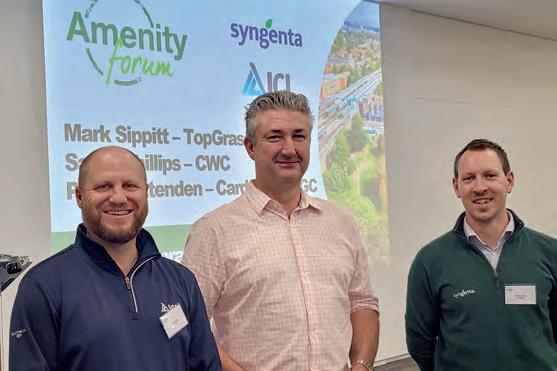
He also commended all the entrants to the Awards for their hard work and dedication to the amenity industry, which does not go unnoticed. “We strongly encourage you to apply again next year, as each entry helps to raise the standards and recognise the excellence in our industry.”
The next stage of the competition will involve individual interviews for the finalists with the judging panel. The overall winner will be announced at the BIGGA Industry Awards during the BTME event in Harrogate in January 2025.




























































































































Greenkeepers and golf club managers now have an opportunity to influence The R&A’s Golf Course 2030 programme, through a survey designed to identify drivers and needs for future sustainable turf management.
The recently held Exhibition News Indy Awards recognised GroundsFest 2023 in an extraordinary way, awarding it both the Best Independent Trade Show Launch and the prestigious Trade Show of the Year.
These honours celebrate the innovation and unique character that GroundsFest has brought to the industry, standing out among toptier independent trade shows across Europe and beyond.
GroundsFest made waves by introducing a new experience to the industry - a blend of live machinery demos, indoor exhibits, free LANTRA-approved training, and even a live music festival, all at a highly accessible event designed to attract professionals from grounds management to landscaping.
Judges were impressed with GroundsFest’s fresh approach, noting how it has “modernised the grounds care and landscaping sector with an inclusive and fun festival atmosphere” and describing it as a “well-overdue shake-up” in live industry events. They commended


GroundsFest’s dedication to the community, with one judge remarking, “There is a real drive to do something different and provide value to the market. Admirable that profits are reinvested into the industry.” Another judge celebrated GroundsFest’s engaging format: “Bringing an industry to life is what events are about, and this event has pulled it off in a superb way.”
Reflecting on the award, Event Director Christopher Bassett expressed his gratitude for the double award win. “We’re truly honoured to receive these awards, especially considering the calibre of trade shows we were up against. GroundsFest was a vision we built from the ground up, and to have it recognised at this level is beyond what we expected.”
“We’re beyond thankful to our incredible exhibitors, visitors, partners and suppliers for making this possible. GroundsFest is a real team effort, and this win is for all of you,” Christopher added.
For more information, please visit groundsfest.com
Golf Course 2030 aims to help golf courses to mitigate the impact of climate change, resource constraints and regulation on course condition and playability, according to The R&A GC2030 Project Manager, John Kemp. It promotes sustainable golf course management practices to ensure the best possible playing conditions for golfers.
“As part of the ongoing development of Golf Course 2030, we need views and feedback from industry stakeholders to assess the impact of what has been offered by the project so far and what is required for the future. That will ensure it continues to provide practical support to course managers and clubs,” he says.
“Golf Course 2030 supports golf facilities, greenkeepers and industry advisors with essential information to make more informed everyday business decisions on how they manage their turf.”
“It is essential that we identify how useful the guidance and resources provided by Golf Course 2030 have been, as well as their influence in helping golf courses and turf managers to make necessary changes in their practices and identifying future needs to inform business development.”
Greenkeepers and golf course managers can take the five-minute survey here: forms.office.com/r/KBqZ8h5Kzz































































































































Global developments are opening doors for British businesses and turfcare professionals to roll out UK turf standards internationally...
...here, we look how governing bodies and influential individuals are progressing standards of turfcare globally.
Firstly, we to get a perspective on the global influence of UK groundsmanship with Dean Gilasbey - a man who has accrued more miles than Richard Branson in the pursuit of global turf excellence. Dean is currently The Director of International Pitch Management at Natural Grass, has undertaken grounds training for FIFA on a number of continents and is co-founder of ISTMA.
What influence has the UK had on worldwide turfcare management? It’s crazy! Wherever you go, be it Africa or India,
everyone wants a pitch to look like an English Premiership pitch. Look at Spain, there are some great ground staff, always has been and always will be. However, we cannot ignore the fact that the Spanish market started to invest in sports pitches once Paul Burgess joined Real Madrid, this was one of the best signings of the season. Paul has a fantastic mind, he thinks outside of the box, and he can bring things back to basic techniques. His simplistic approach has seen some of the smaller clubs succeed. Another example is Jonathan Calderwood who joined PSG seventeen years ago. The French market is one of the best, which has no doubt

improved since his appointment. Previously, the French market was a municipal-run structure, with little money being invested into sports pitches. After Jonathan showed the French market how good pitches could be in France, the organisations changed their approach. Now they invest more in pitches, and fortunately, there are now some great contracting companies such as Parc E-Sports, Natural Grass and ID Verde that maintain the pitches across the country.
Also we have the influence of turfcare professionals within the UK. Amongst many, we have to highlight individuals such as John Ledgwidge who has created a powerful awareness of what ground staff are doing in the UK. Without exceptional turfcare teams, sport wouldn’t have the best playing surfaces to provide optimum playability.
How/what UK practices have been introduced into global turf maintenance?
Unfortunately for the UK, and fortunately for the rest of the world, we have always had the eyes of the world upon us; from muddy FA Cup semi-final pitches in the 80s, to fantastic
pitches from the days when Steve Braddock took over at Highbury.
We have had to adapt our approach to groundsmanship. We have been fortunate enough to have worked on the old soil-based pitches in extremely wet conditions, to the current hybrid pitches that can cope with extreme conditions.
In every form of life, the evolution process always serves to improve. There is no difference when it comes to grass!
Huddersfield Town Football Club was one of the first-ever pitches to be installed using the hybrid system in 1996 by Hewitts SportsTurf - which was highly successful. One slight variation after this original instalment was the introduction of sand. A simple component, which has changed the maintenance process for the rest of the world, and now we mainly stitch into sand-based constructions.
The UK is one of the wettest countries in the world, it rains most days throughout the year. As a result, the investment in sand-based pitches was a stroke of genius and has certainly aided with the pitches we produce to this day.
“In the UK, we have the ease of interacting with suppliers and it’s great when you want to discuss jobs with contractors, it’s easy to get into contact with machinery manufacturers, and they are constantly looking to evolve to make our pitches better.
Lighting rigs originated from the Netherlands when founders SGL noticed the grass was reacting to the lights used to grow flowers. How would they make this market work for them? They had to bring the lights into the UK and,
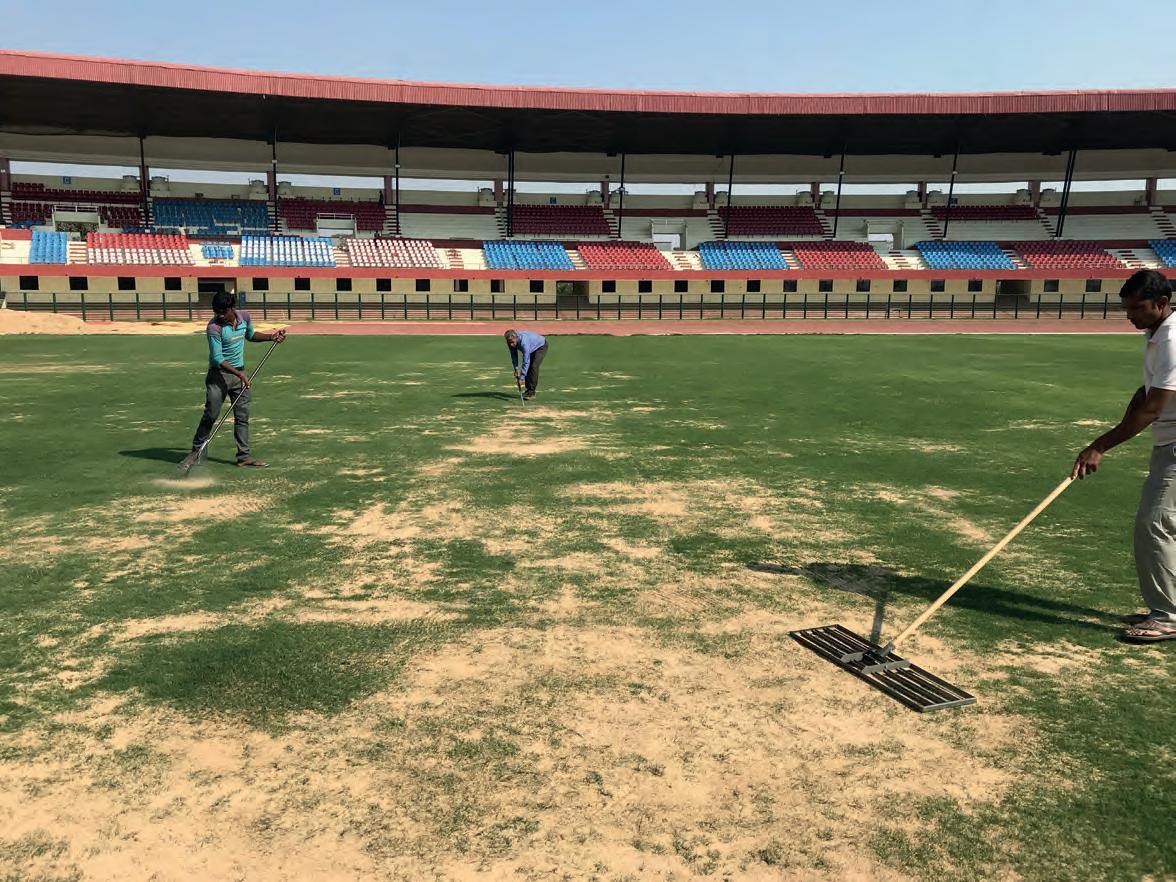
aspects of turf maintenance, from mowers to machines designed to conduct renovations etc.
In some instances, working in the UK can be less challenging than in some of the more tropical countries, where temperatures can fluctuate overnight. It can be 20 degrees one day then -10 degrees within a few days. The UK will never see these differences drop overnight, however, what we are particularly good at is adapting instantly. UK ground staff are some of the best in the world at adapting.
What are some of the challenges with working outside of the UK turfcare market?
Without doubt, the biggest challenge is the aftercare of machinery. I think it is imperative that a dealer/distributor is present in a country to offer initial demonstrations and continued aftercare/servicing/parts for each machine. It is important to remain impartial with machinery and recommend multiple products for venues to assess and decide based on their budget. The likes of John Deere and Toro are great machines, used widely in places like India with representatives on hand.
Fertilisers are also exceedingly difficult to buy globally. In the UK we have over 2200 golf clubs, approximately 30,000 football pitches and a further 56,000 rugby league and union pitches - therefore, there is a market for amenity fertilisers here. In places like Africa, the demand for professional sports pitches is a lot lower,
for working internationally?
There are always opportunities working overseas, however, these opportunities can also have some detrimental effects on you and your personal life. Do some research on the country, understand the culture and embrace it.
The UAE was one of the first ever countries to invest in UK ground staff; Ben Corby, otherwise known as LinkedIn Corby, is probably the best example of a success story. Ben is always willing to share his knowledge and observations for others to learn from.
Saudi Arabia is investing heavily on new pitches over the next few years which could be a wonderful place to work - but it might not suit everyone! Whilst it’s an amazing opportunity, you cannot underestimate relocating your family - if it doesn’t work out, you could have left a fantastic job in the UK in the hope of success overseas, only to return stuck looking for work.
What are some of the things you have learnt while working in countries around the world?
Adapting to the environment is vital to your success and understanding what you are dealing with as quickly as possible is also important. You WILL be told what others want you to hear, which doesn’t help when it comes to preparations of pitches! It is better to be honest, regardless of how bad it might sound, you will be able to react better and quicker! There are very few circumstances where the client does

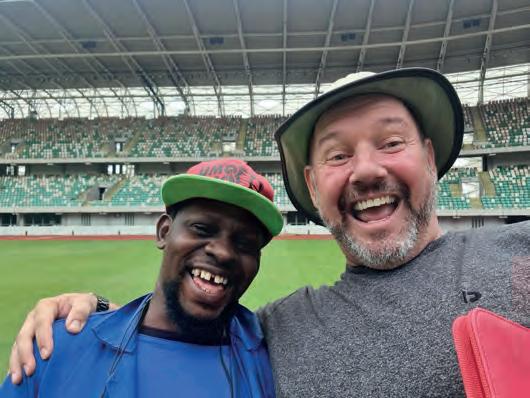

not want to hear your comments, regardless of how many years’ experience you have, but you need to educate them a little differently. You are there to help and no consultant would ever enter a country or a venue with the view to make the pitch worse, (it’s bad for business)!!! The more informed a consultant is, the more informed a newly appointed member of staff is, which will speed up the process for the quest of perfection. Working with Bermuda and Paspalum is
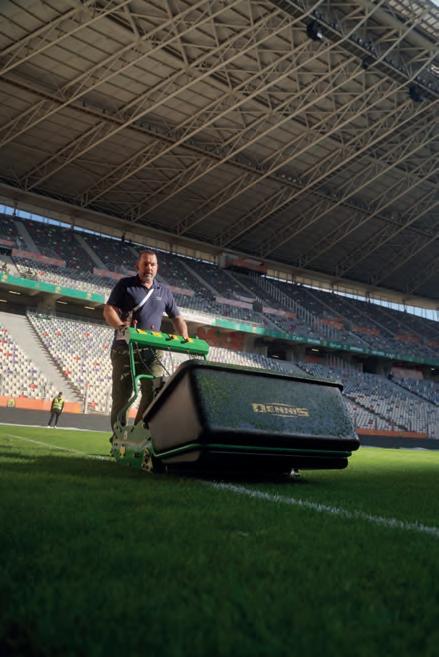

What is ISTMA and what are you trying to achieve?
ISTMA’s aim is to become global leaders in training and development. We want to invest in the industry we love and we are always looking for trusted patrons (reputable companies) that are like minded and want to give back to the industry that has served us so well.
With the support of our patrons, we offer discounted courses to developing countries, written by experts that have worked in some of the biggest tournaments across the globe and have worked in over eighty countries and over 300 stadiums. Why not use this knowledge to pass on more target specific courses to a market that gets very little opportunities to learn?
www.istma.pro
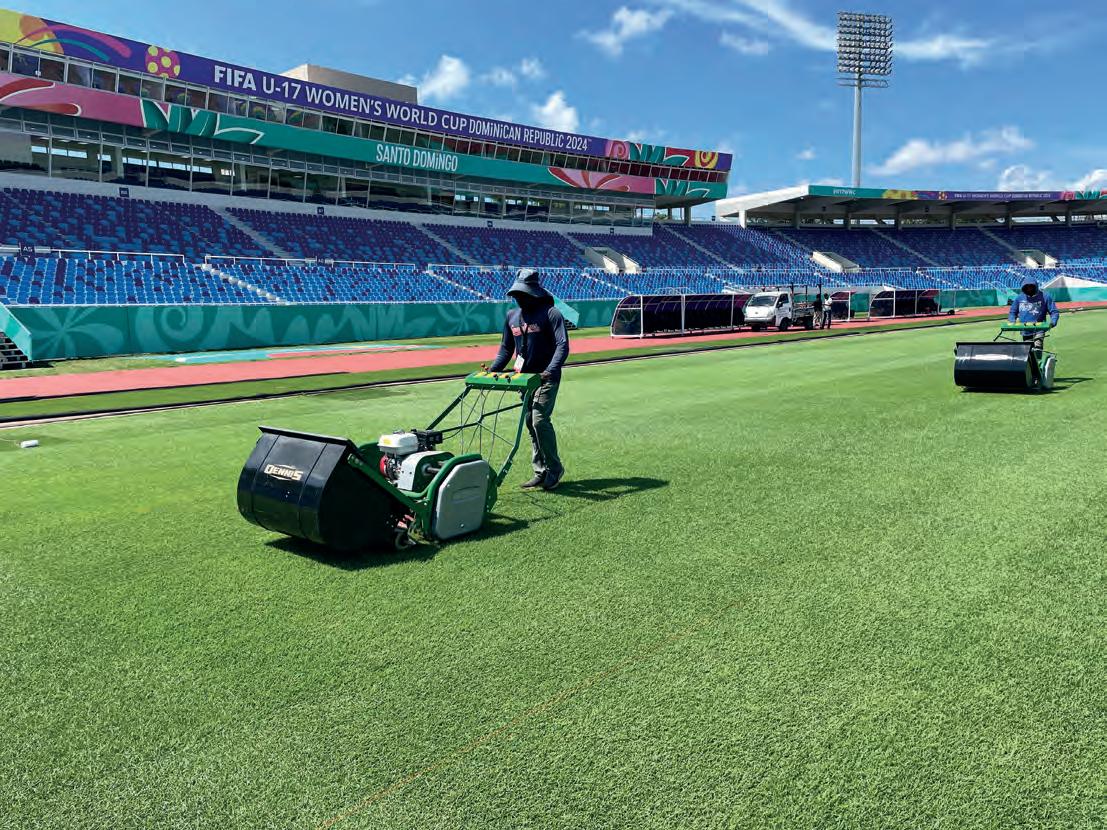

In his role as FIFA Senior Pitch Management Manager, Alan Ferguson has travelled the world to deliver tournaments from U17 level to full men’s and women’s World Cups. One thing all of these tournaments have in common is the presence of British-made machinery and personnel who have been trained in the UK.
The presence of these people and machines has been pivotal in the consistent success of the pitches at FIFA tournaments, and with the creation of the new FIFA Equipment Hubs, it will continue to be so.
Alan explains, “One thing that became evident when we were evaluating stadium and training sites for tournaments was the lack of equipment. To address this issue, we formed the FIFA Equipment Hubs, which support the

procurement of key turf machinery to allow pitch renovations to be fully undertaken.”
“Where possible, we wanted to support local manufacturers, but it became apparent very quickly that a lot of the specialist machinery needed came from Britain and Europe.”
“In terms of groundsmanship, the world isn’t on a level playing field, and one of the best things we get to do is address that and raise standards globally.”
Working globally is not easy, but Alan says several UK companies have done it for years and do it well. Many outside the industry don’t see the challenges of global shipping, customs and exports, and, most importantly, product support. Companies such as Campey Turf Care, Linemark Global, Redexim, SIS Pitches, Dennis, and Harrod UK, to name a few, all fly the UK turf industry flag well.
For FIFA, any company supplying equipment to countries hosting tournaments must support the pitch management workshops, where Alan’s team transfers knowledge to local groundskeepers.
“Having state-of-the-art equipment is one thing, but being able to use it another,” Alan
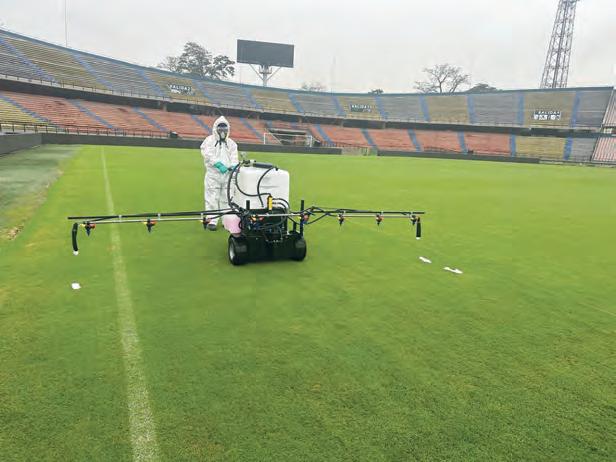

of the best in the world, especially where pitches are concerned. You can turn on the TV and watch any game from the Premier League to League 2 or below, and you’ll see high-quality surfaces. That’s what we’re known for, so that’s what we’re trying to achieve everywhere we go.”
“Our workshops have become one of the highlights of the tournament build-up, where
not only are the companies represented but some well-known faces from the turf industry as well.”
“I can say without fear of contradiction that since 2018, when the new model for pitch delivery was introduced, the pitch quality has gone from strength to strength.”
Ahead of delivering the FIFA Women’s U17 World Cup in the Dominican Republic, the team has delivered tournaments in:
Alan summarises, “I am really proud of the above stats, and the UK industry should be rightly proud of its involvement. Without the industry, there is no way we would have turned around the pitch management delivery so quickly. What makes our industry so great is that we keep pushing forward and innovating, so we’ll continue to raise the bar as the industry in the UK does.”
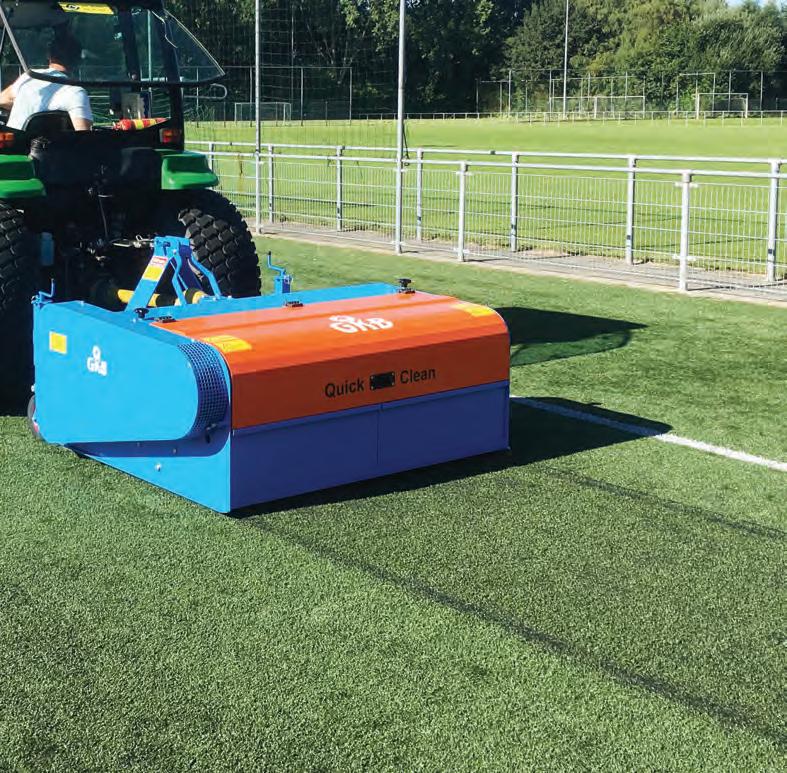
Using our knowledge of contracting to supply professionals with the ultimate turf maintenance solutions.




is widely respected in our industry and, in his impressive 43 years in the industry, has travelled the world. He shares his opinion of the UK infleunce on the rest of the world, in terms of turfcare and grounds management.
What I have seen is that the UK is regarded as one of the top countries for turfcare especially in Professional sports. However, many countries are adapting and developing some really good practices.
One of the really big differences I have seen is how our profession is regarded in the UK compared to other countries. I know this can be seen as a controversial topic as we are still facing a decline in recruitment and retention in the UK, however it is a lot worse in Europe from my personal views!
In the UK, most clubs employ their own grounds teams. These grounds teams care passionately about their sports surfaces and will constantly push boundaries.
Challenging their teams to think out of the box, try new techniques, break rules of turfcare and recreate new ones. Finding ways to innovate and come up with new solutions.
Data management and interpretation are key skills now, making shades of green into black and white that our line managers and end users can understand.
Working closely with coaches and sports science to understand player and sports needs, and look at ways to provide consistency and durability to the surfaces in changing climates and challenging stadiums.
These are many of the key strengths I see of the UK sports turf industry. The challenge in many other countries is that sports turf management isn’t seen as a skill. With many countries still referring to ground staff as gardeners.
Employer v contractor
In Europe, many venues employ contractors to manage the sports turf, and although I have seen many examples of this working well, I do feel it is still not as strong a system as employing your own grounds team, investing in


training and rewarding them.
I feel there becomes a bond between employed grounds teams and their pitches, where the pitches become their babies that they want to nurture and care for, and will find solutions to many challenges.
Education
Other observations are the UK has a great education system when it comes to turfcare. The UK, USA and Australia and New Zealand are countries that I have seen that have long established sports turf training courses. These can be quite generalised covering all sports turf especially golf, however sports turf principles are generally the same with adapting to the sport and environment it is being played in.
Sharing knowledge
The UK is also very open when it comes to sharing knowledge and experience. When you are employed by a professional club such as football, cricket and rugby. You don’t mind helping others if they have challenges and there tends to be a good solidarity in the UK when it comes to seeing people struggling. If you are a contracting company, knowledge is a commercial strength. You wouldn’t want to share it with your competitors as you could lose contracts to them. So, knowledge and experience sharing isn’t quite so forthcoming.
I have also seen this in golf, of other member sports where it isn’t advisable to give your neighbours too much advice as the paying members can move to another venue if they feel the surfaces are better.
1981-1984 at Rodbaston, Staffordshire College of Agriculture.
I studied general horticulture back then as sports turf wasn’t an option to learn. I covered everything from arboriculture, glasshouse, nursery, ornamental horticulture and turf management. I then worked in contracting and local authority until 1994.

AND AN ELITE SCHOOL
1994 - 1997 Grounds manager at Southampton Football Club
During my thirteen years, I was lucky enough to visit many different countries and see how turfcare is undertaken.
2007 - 2016 Grounds Manager at Charterhouse School
Charterhouse was a change from professional sport back to many of my old horticultural practices with ancient woodland, beautiful ornamental gardens, golf course and many different sports surfaces.
2016 - 2021 Senior Grounds Manager at Liverpool Football Club
During my time here, I was asked to go overseas to manage pitches for pre-season training and pre-season tours. This took me to different parts of Europe and the USA, getting to work with grounds teams in the states on some iconic venues.
2021 - Left the UK to live in Portugal
I wanted to have a break from managing large teams in stadiums and to take a look at our industry to see what I could give back to a profession I care deeply about. I wrote six short training courses that I have delivered to many clubs in the UK and some in Europe. The idea is to build up more underpinning knowledge around key tasks that the grounds teams do on professional sports turf.
Present - Grounds Manager for Natural Grass at Olympique Marseille
Future opportunities
One of the key things I am working on with a few others is the creation of an International Sports Turf Managers Association: istma.pro

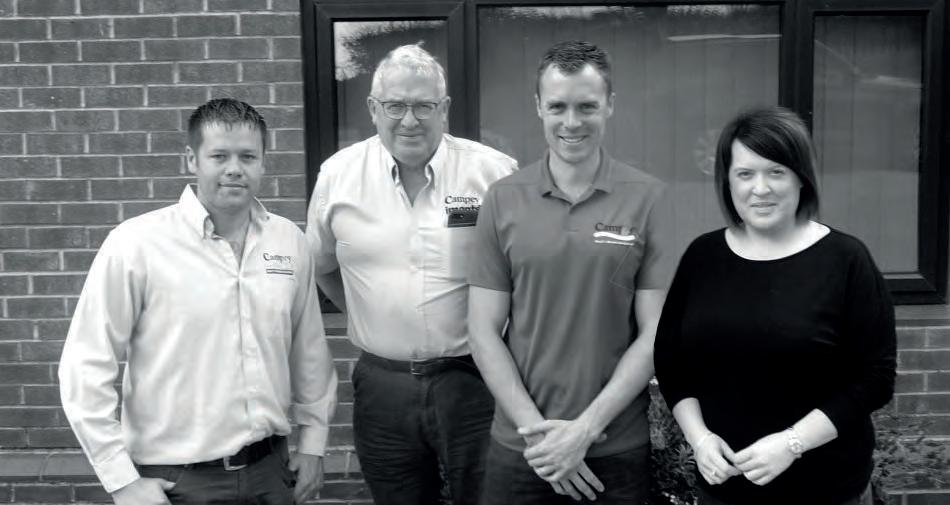
Julia Campey Managing Director
As sport has grown globally, so has the demand for high-quality surfaces. Campey has developed with an ethos of solving the challenges turf professionals face in the UK and, by applying that worldwide, they have built a reputation as a leader of innovation.
Campey’s place as the winner was secured due to its history, progress and innovation in the global turf market and they were presented with the 2024 Global Star Award for its outstanding achievements in innovation and global business growth.
From FIFA World Cups to Wimbledon and Salford City FC to Manchester United, there is rarely a tournament or event played on turf that hasn’t been prepared using a Campey machine.
What initially started out as a business offering sports turf maintenance work within the North West of the United Kingdom has now grown to be one of the UK’s leading independent distributors. Machinery is available from over 70 dealers throughout Europe, Asia, Africa and the USA. Campey continues to strengthen its international presence by establishing Campey Australia and new dealer networks around the world.
Campey Turf Care Systems has conducted numerous European roadshows and demo days worldwide, offering country-specific training to
esteemed professionals and volunteers, thereby consistently elevating the standard of play.
Much of the Campey global success can be attributed to these key areas:
1. Listen to customers – hear their arguments and work with professionals in different international markets. They are on the front line and know what is needed. Look for gaps in the market – see the challenge and look for the solution.
2. Be open to new ideas and innovations – test theories and machinery in the countries we export to.
3. Education and communication - invest in education at all levels. Engage with young people and engage with grassroots clubs, as well as the higher established levels.
4. Work as a team – deliver on the promises of service and quality.
5. Be ready and willing to expand into new markets - whatever the challenges.
Campey’s innovative machinery, combined with education and customer service, is what has led to the exponential and continued growth of a family business from Macclesfield, which is now the number one supplier and manufacturer of specialised sports turf equipment in the world.

The global Golf industry is undergoing a transformative phase, with Europe playing a pivotal role in setting new international standards.
As Chairman of the Federation of European Golf Greenkeepers Associations (FEGGA), I am proud to see how all of Europe is advancing the quality, sustainability, and professionalism of turf management on a global scale.
While the UK has historically been a leader in turfcare, today we are witnessing impressive developments across the entire continent. National governing bodies and industry leaders from multiple European countries are working together to create and promote best practices in turf management that are being adopted worldwide. This collaborative effort is driving innovation and ensuring that Europe continues to be a global hub of expertise.
Supported by organizations like FEGGA and The R&A, Europe is at the forefront of
initiatives that emphasize sustainable greenkeeping - prioritizing biodiversity, efficient resource use, and resilient playing surfaces. These efforts align with global sustainability goals and reflect Europe’s commitment to elevating standards around the world.

FEGGA provides a unique opportunity for businesses and professionals to contribute to this global movement. Joining or as a member of FEGGA, you become part of a network that promotes knowledge exchange, professional development, and the widespread adoption of European turf standards on the international stage. Together, we are shaping the future of the Golf industry, ensuring that European expertise continues to lead and inspire progress globally.
This is a crucial moment for our industry, and I look forward to seeing how these developments will further advance turf standards.

The Kress RTKn robot mowers revolutionise pitch maintenance by covering larger areas with precision. Operating autonomously in parallel lines, they efficiently move from one area to another with zero emissions. Without the need for on-site aerials, they provide a cost-effective solution, reducing setup and maintenance costs. Their ligh tweight design also minimises soil compaction, preser ving turf quality, promoting healthier root grow th, and ex tending pitch lifespan.


Ask for Kress at your local grounds main tenance machiner y dealer, or learn more at kress.com


The Kress RTKn robot mowers maintain areas of up to 36,000 m² each.







James Norris Course Manager
The groundbreaking project at Blackmoor Golf Club encompassed an extensive three-year course improvement plan featuring enhancements to all 18 holes on the Harry Colt course.
The project (which cost circa £500,000) has been undertaken to upgrade bunkers, improve drainage, reshape fairways to enhance visibility and course aesthetics, plus ancillary work such as new pathways and heather planting throughout the course.
The work was implemented in three phases and designed by renowned golf course architects, Lobb & Partners, who were appointed to formalise a strategy to restore and enhance the course.
When discussing the project, Course Manager James Norris said: “The age of the bunkers meant they were not performing to the standard of the course and were not as cost-effectively as they could be. As part of the project, it’s been great to show members what is involved in maintaining the golf course to a good standard and the engineering that goes on underground.”

“We are fortunate that Blackmoor sits on sandy subsoil which helps alleviate flooding and support course drainage, however, over time, the bunkers had changed shape and the sand mix had become inconsistent. Upgrading was necessary and new liners and drainage were installed to every bunker as well as the addition of heather planting to improve course aesthetics.”
“We have continued with the same bunker sand as before, called Headon Washed. For the construction of the bunkers, we used resources from the current course and imported local heather.”
“Although the major works are now complete, the course will continue to improve with our programme of maintenance as the enhancements bed in. We have laid rubber pathways to six holes already and have plans to install further pathways to the remaining twelve holes over the next four years,” said James.

He suggested he wanted to do more: “We considered greater course enhancement, including greens and tee boxes etc., but that would have been a major project which would have taken much longer to complete. I trusted that the bunkers were enough to concentrate on and fundamental to achieving what was required on the course.”
Speaking on the project, Tim Lobb, Principal of Lobb & Partners, said: “As with virtually every course of this vintage, the bunker shapes have lost their artistry and the vegetation has changed. We have been advising the club for several years and spent a lot of time going through the club’s archive to understand the landscape and nature of the course. We jointly decided that it was time to put spades in the ground, so to speak.”
“Over the past three winters, we have worked at the club to implement our Colt-inspired bunker and heathland restoration project to the course. The club’s dedication to continual improvement of the course and environment is no more evident than in the final product that is seen today after these works.”
“We were thrilled to be part of this team and oversee the design elements with construction by contractors Profusion Environmental. Congratulations to the club and Course Manager James Norris and all the greenkeeping team for
The bunkers were not performing to the standard of
Established in 1913, Blackmoor is a stunning par 69 heathland golf course designed by renowned golf architect, Harry Colt. Ranked within the top 100 golf courses in England, Blackmoor hosted the regional qualifying for the Open Championship between 1998 and 2003, is an England Golf Championship venue and is home to the Selborne Salver, one of Britain’s most prestigious amateur events, attracting both International and Walker Cup Players.
Noted for its quality greens and playable throughout the year, Blackmoor provides a superior golfing experience. Offering members and visitors access to a championship 18-hole golf course, extensive practice facilities, a well-stocked pro shop, a modern clubhouse with a restaurant and separate bar and terrace and a range of competitions and events throughout the year.
delivering an exceptional course that will grow into the construction works and for first-class playing conditions.”
Tim concluded: “The club initially hired Lobb & Partners because of their experience working on heathland courses. This year, we are working on holes six, seven, thirteen, fourteen and fifteen - focusing on restoring the heathland environment and improving the bunkers which have become in need of some attention. The refurbishment and restoration will take inspiration from Colt’s design principles and be visually traditional but employ modern techniques that support ongoing course maintenance.”
Commenting on the project, Management
Committee member at Blackmoor Golf Club, Michael Cave, said: “Over time, the golf course has evolved and some of Colt’s design philosophies have been diluted. The bunkers have gradually changed shape and, during heavy rainfall, a few were prone to flooding due to the lack of liners. By doing the work, Blackmoor will have bunkers in play all year round, much better drainage and the sand mix will be more consistent, as well as employing an aesthetically pleasing construction technique.”
Article by James Kimmings.


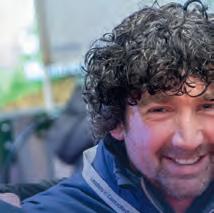


































































































































































What is a fertiliser?
We need food to survive and the same applies to a plant. Fertilisers are made up of micro and macronutrients. The main macronutrients are N nitrogen, P Phosphorus and K potassium. There are also several micronutrients including Fe iron, Zn Zinc, copper and boron etc. The term macro means these nutrients are needed in larger quantities, whereas the micronutrients are required in smaller quantities.
What do the main 3 nutrients do?
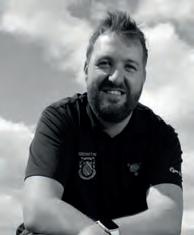
James Matthewman is Deputy Head Greenkeeper at Maesteg Golf Club and welcomes topics
for future Top Tips.
Nitrogen will help promote leaf growth and it will also aid in giving fine turf a rich dark green colour. It is also a key component of chlorophyll which aids plants to create sugars using sunlight - the more common name of a plant’s food process known as photosynthesis. Phosphorus, another important process in photosynthesis, will help transfer and store energy which, in turn, will help promote root growth. Potassium will help control the water uptake and the water pressure in cells, which is a key component in the stretching of cell walls. It is also a useful aid in protecting against turf stresses and diseases.
How do I know when to fertilise?
Any experienced qualified turf professional will know when their fine turf is hungry or not firing on all cylinders. However, it is vitally important to regularly have a soil analysis
carried out - at least once, if not twice, a year. This will help in receiving data analysis showing what is lacking and what is needed to put things right to promote healthy turf. I must also stress it is important not to overfeed! This can stretch the cell walls too much and allow pathogens to invade, thus leading to a disease outbreak.
How do you apply fertiliser?
There are a few ways to apply fertiliser; whether it be through spraying or using what is known very well in the turf industry, a fertiliser spreader or distributor. This will disperse the granules across the fine turf evenly and, with slight adjustments, you can choose what amount you would like to disperse. A very common rate is 35g m2, however here at Maesteg, we disperse at a half-app rate of 16/17g m2; this is a personal preference to not aid in overfeeding.
How do I know what fertiliser is best?
This is all down to the individual. You may have used a particular fertiliser since day one and stuck to it - which is fine if it is working. There is no harm in asking fellow peers for advice, or you could request a meeting with local reps from different companies to see what is available and what will work best for your turf. As previously mentioned, it always comes down to the manager’s final decision and what will work best for their fine turf!











In the tranquil landscapes of the United Kingdom’s golf courses, ancient trees stand as silent witnesses to the passage of time.
These admired giants, with their gnarled trunks and sprawling canopies, not only lend an air of majesty to the scenery but also serve as vital hubs of biodiversity.
Guided by the expertise of organisations like
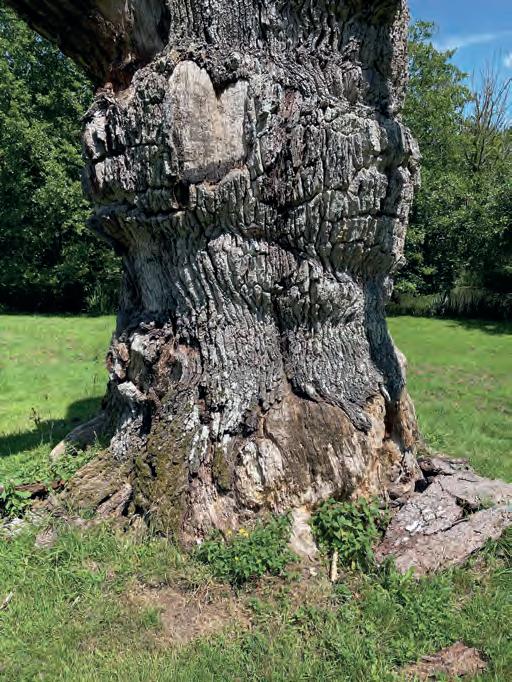
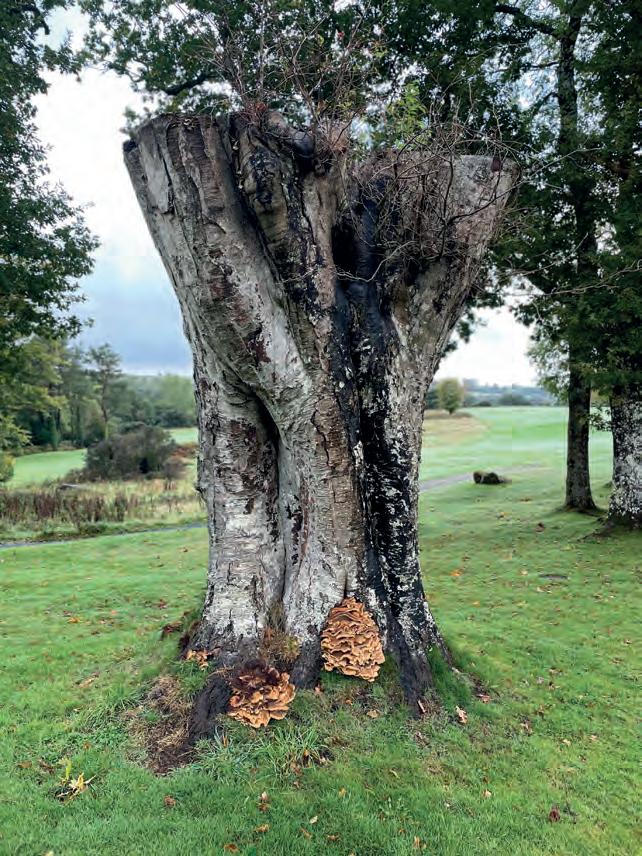
the Ancient Tree Forum (ATF) and Woodland Trust, golf courses are recognising the importance of these ancient guardians, and embracing strategies and tree management policies to protect and enhance the biodiversity they support.
The ATF, a leading authority on ancient trees, defines these arboreal marvels as individuals that have reached an advanced age, often spanning several centuries. Their longevity and resilience make them invaluable components of the UK’s natural heritage, and their conservation is paramount to maintaining biodiversity within golf course landscapes.
The Woodland Trust, in conjunction with the ATF, provides comprehensive guidelines and recommendations for managing ancient trees, outlining strategies to ensure their preservation and the enhancement of associated biodiversity.
Ancient trees are not merely relics of the past; they are dynamic ecosystems in their own right, supporting a rich diversity of flora and fauna. From the towering oaks to the majestic beeches, each species harbours a unique assemble of life forms, from microscopic organisms to charismatic vertebrates. Birds, in particular, are highly dependent on ancient trees for nesting sites, roosting spots, and foraging opportunities. Species such as Woodpeckers, Owls and

Nuthatches rely on the nooks and crannies of ancient trees for shelter and breeding, contributing to the vibrant avian community within golf course habitats.
But it’s not just birds that benefit from the presence of ancient trees; mammals also find refuge amidst their branches and hollows. Bats, for instance, are known to roost in the crevices of ancient trees, emerging at dusk to forage for insects in the surrounding landscape. Squirrels, dormice, and even rare species like the barbastelle bat depend on ancient trees for food and shelter, highlighting the interconnectedness of these majestic beings with the broader ecosystem.
Furthermore, ancient trees provide vital resources for a plethora of invertebrate species, from beetles and butterflies to spiders and fungi. The decaying wood and leaf litter associated with ancient trees create microhabitats teeming with life, supporting a complex web of interactions essential for ecosystem functioning.
Epiphytic plants, such as mosses, lichens and ferns, find purchase on the branches and trunks of ancient trees, adding to the richness of biodiversity and providing food and shelter for a myriad of organisms.
Incorporating the recommendations
of the ATF and Woodland Trust into golf course management practices is crucial for safeguarding the biodiversity associated with ancient trees. Proactive identification and assessment of ancient trees, using methods such as tree surveys and mapping technologies, enable golf course managers to prioritise conservation efforts and implement targeted management strategies. Protection measures,
• Relieve Compaction - Creating a buffer zone of wild area, 5m larger than the Crown if possible, to help the roots grow. Preventing root and soil damage.
• Light - Pruning or felling of sprightly younger trees immediately surrounding the tree competing for light.
• Space - Allowing the tree crown adequate spreading room.
• Decay - Value and keep dead trees and wood wherever possible, as this supports specialist wildlife that need this to survive. If a tree must be cut down, leave tall stumps (Monolith) which can be allowed to break down naturally.
• Restricting uses of Pesticides and fertilisers near the tree, as these can harm the mycorrhizal fungi, microorganisms and lichens which colonise the tree.:
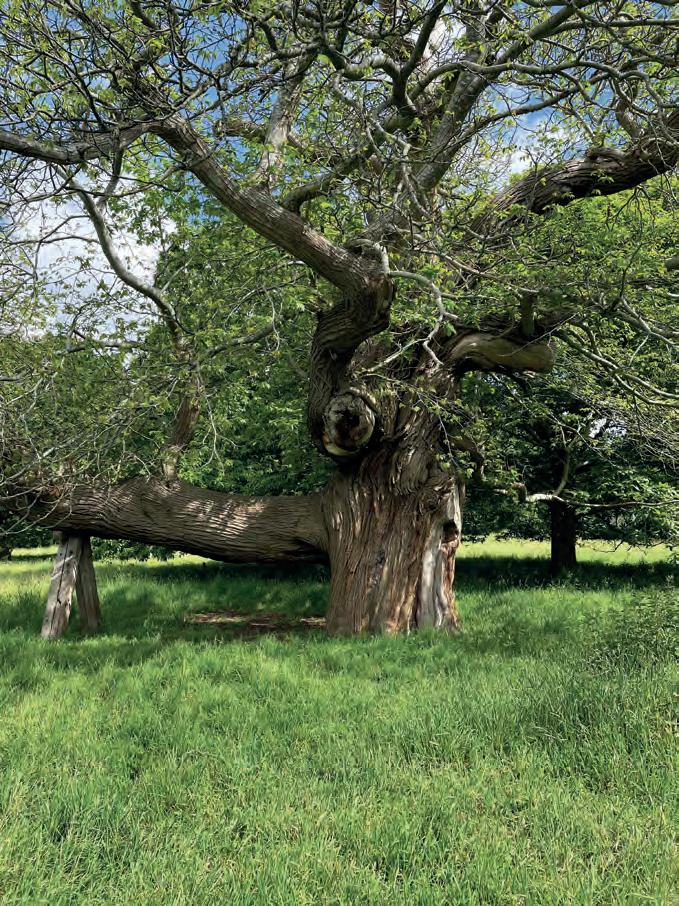
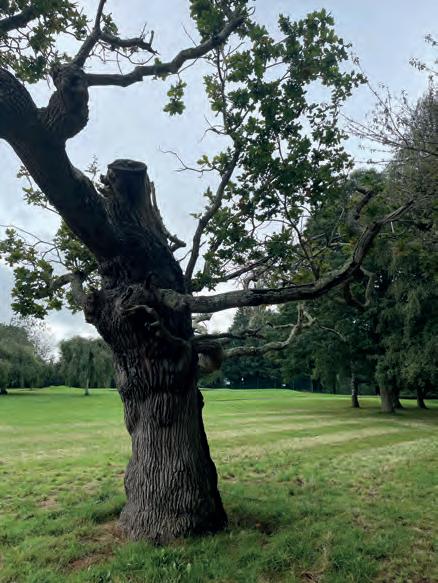
including the establishment of buffer zones and regular monitoring, help mitigate potential threats and ensure the long-term health and resilience of ancient trees.
Enhancing biodiversity around ancient trees involves creating habitat corridors, diversifying
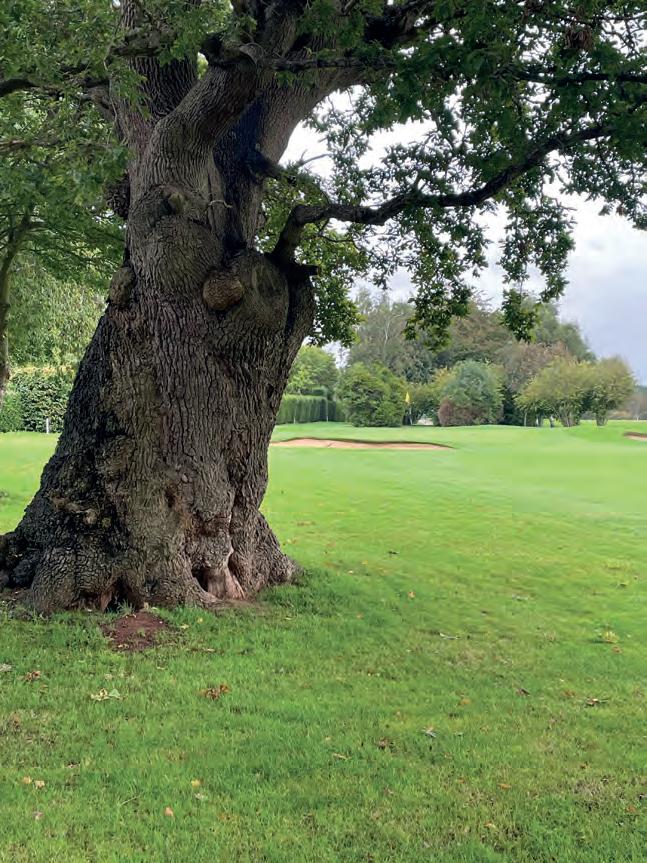
understorey vegetation, and incorporating features such as deadwood habitats to support a wide range of species. By fostering partnerships with conservation organisations, local communities and other stakeholders, golf courses can leverage resources and expertise to maximise the effectiveness of their conservation initiatives and contribute to broader landscape-scale conservation efforts.
In conclusion, ancient trees play a vital role in maintaining biodiversity within UK golf courses and amenity sports landscapes, serving as keystones of ecological resilience and cultural heritage. By embracing the guidance of organisations like the Ancient Tree Forum and Woodland Trust, golf courses can fulfil their role as custodians of the land, preserving the legacy of ancient trees for future generations to enjoy. As we strive to protect and enhance the biodiversity of our landscapes, let us remember that the roots of conservation run deep, anchored in the timeless wisdom of the ancient trees that grace our golf courses.
If you do have an ancient tree on your course, you can log this on to the Ancient Tree Inventory (ATI) by adding this tree to the inventory, you’ll be helping us to map, celebrate and protect our most important trees of the U.K.
Please visit ati.woodlandtrust.org.uk












For more information on tree preservation, please visit: www.ancienttreeforum.org.uk www.woodlandtrust.org.uk
Article by David Chammings – Amenity Specialist – Agrovista Amenity David is also a Verifier for Ancient Tree Forum and a Volunteer for the Woodland Trust.














































We spoke to a new volunteer groundsman, Dan Roberts, to find out what it is like working on a budget and the importance of grassroots grounds staff for the future of football.
Dan has been working in turfcare for the last six years, however, he has only recently become the volunteer head groundsman at his local football club, Braunton FC. He reflected on how tricky it has been to manage work, rest and play when volunteering.
“There are a few challenges with being a volunteer groundsman; funding, time management, the equipment and the number of games required at grassroots. I recently spoke to Devon FA and we have secured funding from the GMA for a six-year improvement plan. The key principle behind the service is the offer of advice/practical solutions from images I send to
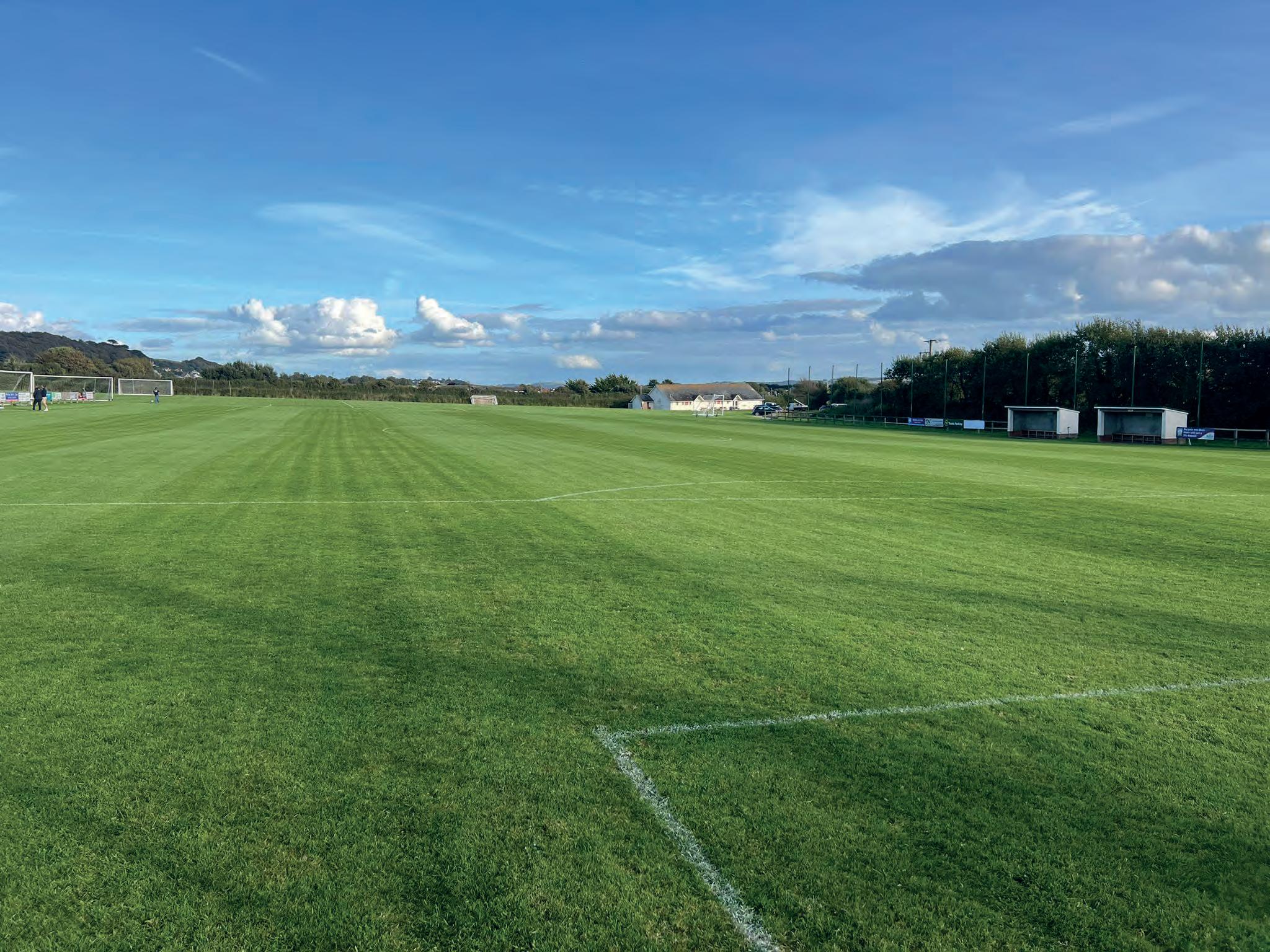
them – which should improve the pitch overall during the six years.”
“Previously, the club also received funding from the Devon FA for a new John Deere tractor, as well as a spike aerator. It was over £22,000 worth of equipment and has been massively helpful.”
Despite the club being located in a small village, it is still an extremely busy venue. Dan commented: “We have over four hundred children playing at the club including the U16s, U18s, the female teams, the disability teams and then we have the three men’s teams. This number of teams means we have a lot of games to manage; from August to May, we have at least three games a weekend on the main pitch,
I have come in with a lot of ambition and I want it to be the best pitch in Devon. I have a list of projects to complete but, when you have three games being played every weekend, it is hard to push for the best due to limited resources. Our irrigation system is a tap and hose, and we just have to accept that working in grassroots means you work within your means.”

which is why the funding is so essential to produce playable surfaces week in and week out. We maintain the main pitch and the second pitch which are both 11-a-side, plus a 9 v 9 pitch and a five-a-side pitch.”
“Volunteer grounds staff are one of the most vital cogs in running a club; without them, the pitches would turn into a mud bath. My son plays at the club, and I want the surface to be safe for him and his friends to play on. If the pitch is flat and there are no bumps, the playing experience is so much better. My main focus was to improve the pitches to allow the young players to benefit and develop.

Left and below
Before and after recent renovations.

If kids are playing on grass up to their ankles and divots all over, they are not going to enjoy the game as much.”
Dan is busy doing renovations at the moment, he analysed how it is going so far: “I have hired all of the equipment we needed, including a verticutter, disc seeder and tractor – which turned out to be the biggest price of the renovation. It was worth it though to be able to verti-drain all the pitches over one weekend. We have used 100kg of seed on the first team pitch and then 40kg of seed on the second pitch.”

“Despite the renovations, the club still wanted to train on the pitches - which proved challenging at times and meant it took slightly longer because I had to stop and start. We have suffered with a lot of thatch which needed to be taken out before we could start seeding.”
Dan concluded by telling us how he fits being a volunteer groundsman into his day-to-day life: “I have my job which I work from 7am until about 6pm. I have two children and a very supporting wife, who is thankfully on board with grounds management. This position is something I am extremely passionate about and, potentially, something I’d like to do when I move on from my current job.”
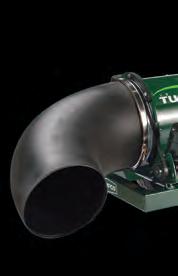











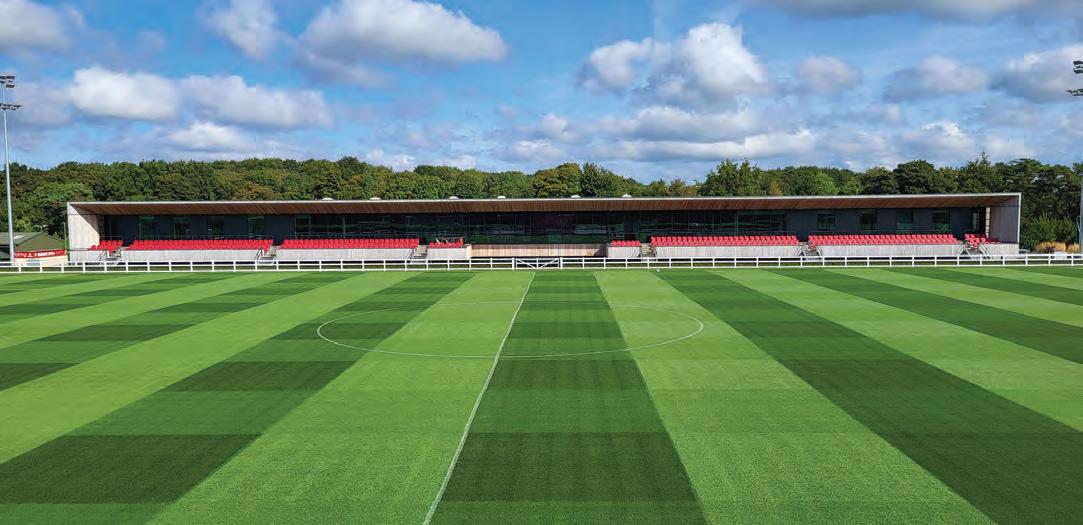




















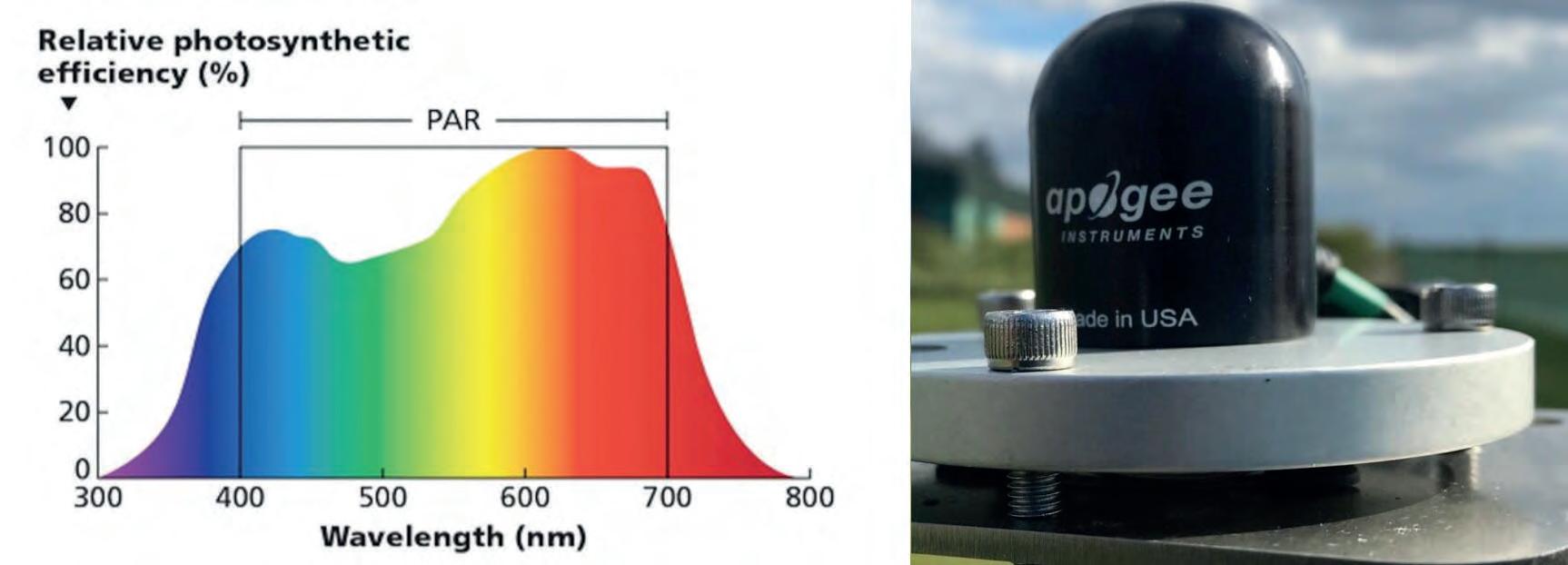

Hunt Weather Analytics, Prodata Weather Systems
What we received was very different with many areas reporting record rainfall for the year and a distinct ‘lack of summer’. Only the east of England could be labelled as on the dry side this summer, but even here they have been playing catch up recently. Here in Market Harborough, with our average rainfall usually around 660mm, we are currently on 900mm y.t.d, so nearly 50% up on the 30-year average with 10 weeks still to go.
So just what is going on with the weather?
20+ years ago, I remember looking at some Met Office projections for our future climate (now our current climate) and it talked about wetter, warmer winters and drier, hotter summers. Well, the present-day reality is very different. The departure from predicted appears to be closely related to the fact that warmer air has the potential to hold more moisture. Indeed, for every 1°C increase in air temperature, it can hold 7% more moisture, as I reported in a recent Pitchcare article.
summer) using a Central England location.
Incidentally, PAR light is the part of the light spectrum that plants utilise for photosynthesis and we use an Apogee SQ 212 PAR light sensor fitted to a Davis Vantage Pro2 Weather Station to measure it (shown above and below left).
Here are the results;
1st – Oct 15th)
Now, I thought it would be less, but not that much of a drop year-on-year vs. 2022, a year when we had more sunshine. That’s a 37.5% reduction for 2023 and 2024 vs. 2022 and remarkably the last 2 years are running within 1% of each other.

In a year with more rain, one would expect light levels to be lower as well, as more cloud reduces the amount of sunshine, so I looked into the amount of PAR (Photosynthetically Active Radiation) light that we received y.t.d vs. the same time period in 2023 & 2022 (arguably the last year we had a decent
The decrease in PAR light availability has significant implications for the grass plant because, for example, Agrostis as a species needs much more light than Poa annua for example, whether that be Creeping or Browntop Bent (the exact amount is still not discerned), so we can assume that from a light perspective the last two years have been less beneficial for the high PAR requirement plant species, and more for Poa annua if we talk purely about fine turf.
Coping with wet years is a difficult task in itself to maintain a playing surface, but that lack of PAR light will be exerting a hidden selection pressure on the grass species you maintain.








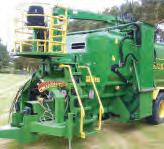





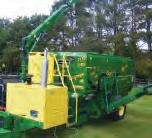



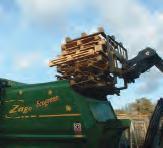





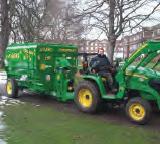




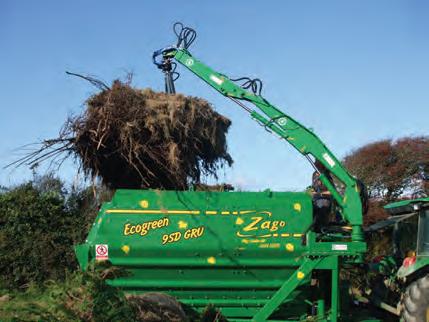

From a golf course perspective, you need to distinguish between fungi that are pathogenic to plants and those that are not.

Dr John Dempsey Turfgrass Pathologist
Fairy rings on golf courses are distinct patterns that appear on turf, characterized by circles or arcs of mushrooms, lush green grass, or sometimes dead or discoloured turf. These rings are caused by specific fungi known as basidiomycetes.
Here’s how they manifest and affect the golf course turf. One of the most visible signs of fairy rings is the appearance of mushrooms arranged in a circular pattern. These mushrooms emerge as the fungal network beneath the soil reaches a certain stage in its lifecycle. Some fairy rings cause the grass within the ring to grow more vigorously and appear greener. This is often due to the breakdown of organic matter by the fungi, releasing nitrogen and other nutrients which the
grass then utilises.
In some cases, fairy rings lead to areas of dead or discoloured grass. This happens because the fungi can make the soil hydrophobic, meaning it repels water, which in turn stresses the grass by limiting its access to water and nutrients. For golf course superintendents, fairy rings present an aesthetic challenge as they can disrupt the uniform appearance of the turf, which is vital for both visual appeal and playability. Managing fairy rings involves a combination of practices, such as adjusting irrigation to compensate for hydrophobic soil, applying fungicides, and potentially modifying the soil to improve water retention and nutrient availability. Given their complex nature, fairy rings require ongoing attention and a tailored management approach,



as what works on one golf course might not be effective on another due to differences in soil composition, climate and fungal species involved.
Fairy rings illustrate the intricate and often unseen ecological dynamics at work beneath the soil surface. These fungi engage in complex interactions with various soil organisms, such as bacteria, other fungi and plant roots, as well as abiotic factors like moisture levels and soil composition.
This interaction network influences not only the localised environment where the fairy ring occurs but extends its impact on the broader ecosystem. As these fungi break down organic matter and alter soil chemistry, they can affect nutrient cycling and soil health, demonstrating their ecological significance. The identification of over sixty fungal species associated with fairy rings highlights the vast ecological variety present, presenting a formidable challenge for turf managers attempting to develop effective control strategies.

Fairy rings underscore particular challenges and considerations essential in modern turf management:
Adaptability: Fairy rings compel turf managers to adopt a flexible mindset, requiring them to explore and evaluate a range of management strategies. Since fairy rings vary significantly in appearance and their response to treatments, an approach effective in one scenario might fail in another. This necessitates an adaptive management style where turf professionals continuously refine their methods based on observation and feedback, ensuring they tailor solutions to specific conditions.
Innovation: Continuous innovation lies at the heart of managing such complex issues. The development of new fungicidal treatments, soil surfactants, and solutions aimed at enhancing soil nutrition displays a broader movement towards adopting science-driven and technologically advanced approaches. These innovations are critical in developing management techniques that are not only effective but also environmentally sensitive.
Sustainability: With sustainability receiving increasing emphasis, turf managers are encouraged to employ practices that minimize negative environmental impacts. This implies reducing reliance on chemical solutions, promoting biodiversity within the soil ecosystem by encouraging beneficial organisms, and implementing cultural practices that synergize with natural processes. Sustainable practices help maintain soil health and ecosystem balance, reducing the likelihood of problematic outbreaks like fairy rings.
Right Scarlet Elf Cup Fungi - Sarcoscypha austriaca Winter woodland fungus.
Continued research is indispensable in advancing our understanding and management of fairy rings.
In-depth exploration of the biology and ecological functions of fairy ring fungi can reveal critical insights into their life cycles, interactions, and impacts on soil health. This knowledge is pivotal for developing management strategies that mitigate harm to the surrounding ecosystem, ensuring that solutions are both targeted and sustainable.
A holistic approach that combines cultural practices, chemical treatments, and biological controls may offer more robust and environmentally friendly management solutions. By integrating multiple control methods, turf managers can address the issue from various angles, increasing effectiveness and reducing the risk of adverse ecological consequences.

Development of predictive tools capable of forecasting fairy ring appearances
Without fungus, your grasses wouldn’t grow very well, and we would be in a whole heap of trouble - there I’ve said it.
Grass has the green pigment chlorophyll in its leaves and can therefore create organic molecules using photosynthesis. Fungi cannot - what it can do is to break down complex organic molecules to the grass in return for some photosynthesis sugar which the grass has. Grass cannot break down complex organic molecules, but fungi can… are you still with me? This shared relationship is called mycorrhizal, a mutual relationship between a plant and some fungi. If we kill off the fungi, we will most likely reduce the grass plant’s survival rate during periods of pressure.
Next time you are digging a bunker face out, or stripping turf from the rough, take a look at the fine mushroom smelling white strands which work their way through the soil - this is the actual fungi, or hyphae and this attaches to the roots in the rhizosphere of the grass - this is when the beneficial relationship begins. The mushrooms you see are merely the fruiting part of the fungus that grows when environmental conditions are suitable (usually autumn and spring).
James Hutchinson Freelance Ecologist.
based on environmental indicators such as climate conditions, soil health metrics, and historical data could enable initiativetaking management. By anticipating when and where fairy rings are likely to occur, turf managers can implement timely interventions, potentially preventing severe infestations before they arise.
Beyond their immediate impact, fairy rings symbolize larger environmental challenges, reflecting the delicate interplay between human-managed systems and natural ecosystems. They serve as a potent reminder of the need for sustainable and mindful management practices that respect the intricate balances within natural environments. As turf managers navigate these challenges, their insights contribute to broader environmental stewardship efforts, promoting a harmonious coexistence with nature.
Fairy rings on golf courses represent a complex and multifaceted challenge that manifests not only in visible patterns of mushrooms and turf health variations but also in intricate ecological interactions beneath the surface. These rings underscore the necessity for golf course superintendents to adopt adaptable, innovative, and sustainable management practices.
Given their variability and impact, fairy rings demand a tailored approach that incorporates continuous research and a deep understanding of soil and fungal biology. By integrating diverse management strategies and predictive tools, turf managers can more effectively anticipate and mitigate the effects of fairy rings, while also contributing to a broader understanding of ecological stewardship. The management of fairy rings exemplifies the intricate balance required between artificial landscape maintenance and natural ecosystem processes, highlighting the importance of harmonizing these often-competing interests through mindful and informed practices.

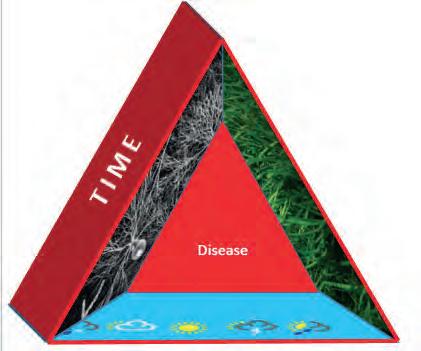


The disease triangle
It is necessary for all three factors; the pathogen, the host and the environment to be present in the same place at the same time before disease occurs.
Time could be introduced as a fourth factor;
• The time that the host plant is most susceptible to disease development
• The time that the environmental conditions are conducive to disease development
• Length of time between inoculation with pathogen and appearance of disease symptoms
PATHOGEN
No control – it’s always there
HOST
Different turf species
Better health by:
Nutrients
Defence activators
ENVIRONMENT
Surface moisture
Rolling
Irrigation
Mowing height
Removal of thatch
Improvement of growing media (drainage and aeration)











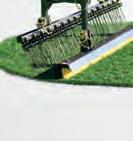








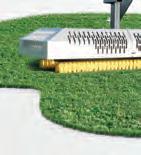



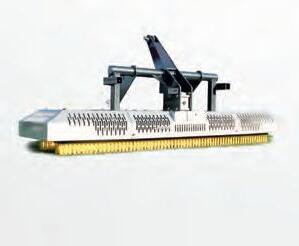





































































































A pathogen is an organism that causes disease in animals or plants

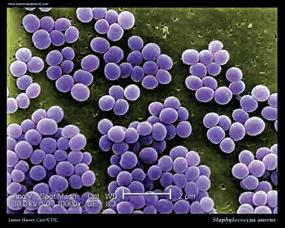

Viruses are the I Robots of pathogens
• Each individual virus is created fully formed. They rely on host materials to build and power themselves
• They can replicate extremely quickly (e.g. Norovirus)
• Fortunately for grass, their occurrence on turf is very rare
Bacteria
• Not all bacteria are pathogens which cause disease
• Many bacteria have functions which are useful
• If you remove all the water from your body, bacteria are roughly 10% of your mass
• At any time there are 200 - 2000 trillion bacteria on us
• There is a huge amount of diversity

Most plant diseases (70%) are caused by fungi, BUT fewer than 10% of all known fungi can colonize plants
Fungi are a separate biological kingdom from plants, animals, and bacteria, and they include well-known organisms such as moulds, yeasts, and mushrooms. The grassland fungi live below ground, forming intricate networks of fine threads known as mycelia; only the fruiting body, the spore-producing “mushroom” or “fungus”, is visible above ground at certain times of the year. To add to the mystery, the fungus does not always produce fruiting bodies each year, so identifying fungi can be difficult.
The strategy that fungi use to obtain nutrients determines which it is. A few types:
• Saprotrophic fungi obtain nutrients from decaying organic matter and are not pathogenic (though they can become so)
• Biotrophic fungi obtain nutrients from living cells and are pathogenic
• Necrotrophic fungi obtain nutrients from dying cells and are pathogenic
All fungi will have mushrooms as they are simply one of the ways that fungi reproduce; they can do so both sexually (mushrooms) and asexually (hyphaea type of fungal root) break off and get spread elsewhere.
There are many distinct types of fungi (estimated 15,000 species in the UK). Due to the range of habitats that are found on a golf course they can support a wide range of fungal species. In some instances hundreds of species have been identified on a single course.
Two groups of fungi affect turf:
• Ascomycota
Includes: Anthracnose. Dollar Spot, Microdochium, Leaf Spot, Take-all patch
• Basidiomycota
Includes: Brown Patch, Fairy rings, Red Thread, Rust

Dr Abigail Graceson Technical Manager, Agrovista UK Ltd
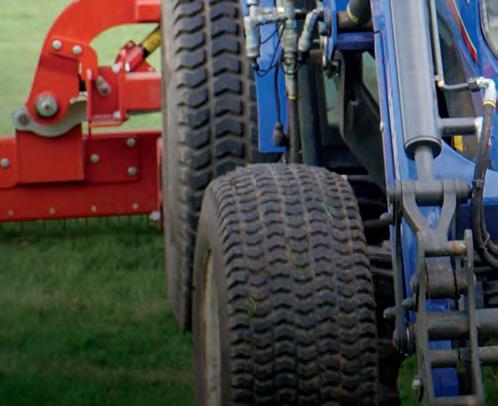





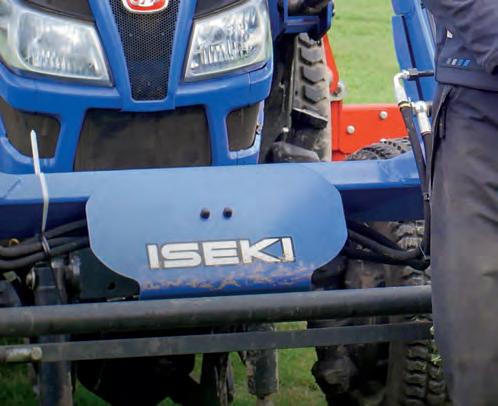

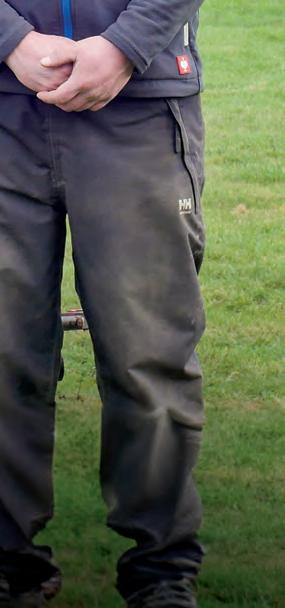
“We needed a tractor to carry out a wide range of tasks, the TG6675 had the lift capacity of 1,680kg and big 67hp engine so we could use all of the current implements. We now also run a blower on the front of the tractor along with woodchipper
“The PTO switch on the outside of the tractor stops you having to keep jumping in and out of the cab, great feature for us. Front loader moves all our loose materials easily and the pallet forks can be attached to keep everything neat and tidy in the yard
“It is a solid yet compact tractor which is perfect for getting to every area of the golf course. It has been invaluable since day one, the complete package and the best tractor we came across.”
Pete Allen, Gerrards Cross Golf Club

Jump racing has returned to Windsor Racecourse, 26 years since the ‘winter game’ last took place on the Berkshire track.
Meanwhile, Windsor has become renowned for its summer Monday flat meetings, which have been hugely popular with racegoers keen to make the start of the working week more enjoyable with an evening at the track.
Charlie Rees, in his third season as clerk at Windsor, stresses that plans for jumps racing were put in place to complement, rather than overshadow the flat season. Fixtures will also be carefully timed so that they do not negatively impact ground conditions for flat racing.
“Windsor has a highly successful flat programme but jumps racing is part of the track’s history. The former New Year’s

Day meeting was renowned for highlighting future champions.”
He points out that owner Arena Racing Company has invested significantly in turf husbandry which has already benefited the track and should help to present the optimum going for jump racing. “And, although we are on an island in the Thames, the area very rarely floods due to the Jubilee Relief River.”
Work to develop a running line for hurdles and steeplechase fences began in October 2022, straight after the final flat meeting of the season, he explains.
“The flat track runs around a figure of eight, but jumps races will run around the outside of this with no crossover, so we’ve levelled an extra 1ha of land beyond the existing outer rail.”

Development involved Koroing off the top 10mm and then building the surface back up with a 70/30 soil/sand mix.
MK Services then mapped the area for a total of three miles of rail using GPS and surveyed each bend for its angle and grade.
“Windsor is a relatively flat track, but it has to ride safely,” comments Charlie. “The idea is to provide a ‘galloping’ track that will require some stamina.”
Races will be a maximum of 3 miles, in which case they will take run over two circuits of the track, and there will be four different start positions for the various race lengths.
Using GPS to create the positions to site the rail for the jumps track before the winter season was key, since they can’t be marked on the ground which is being used for flat racing, he explains.
Old rail removed during the development has been recycled by Duralock as part of the company’s environmental scheme – five tonnes of plastic were loaded into two articulated lorries, generating a ‘credit’ which was put towards the purchase of jump wings. A mile of new rail was also purchased.
Moving and siting rail is a key part of the ground staff role at Windsor – with 26 flat meetings each year, it’s the busiest flat track in the country. Only Newmarket holds more meetings, and these are on two separate tracks, the Rowley Mile and the July Course.
In August alone there are six meetings in fourand-a- half weeks. And by August 2024, the track had already hosted 1300 runners for the season.
With such pressure on the turf, preparing and preserving the sward has been an important
We have the approach that ‘no idea is a silly idea’
strand of the project.
Avoiding a crossover for the jumpers not only offers safety benefits but also protects the intersection which gets more wear than most parts of the course in the flat season.
On the new left hand track design, nine steeplechase fences will be placed on the outside of the bend, and have been built as portables by WF Racing of Richmond, Yorkshire.
“The fences are built on steel frames which have a hydraulic wheel unit allowing them to be towed into place the day before racing and towed off afterwards,” explains Charlie. “It’s easier to mow and aerate without fences on the track and it also means that they can be easily repositioned to give fresh ground for take offs and landings.”
Fence design includes cushioned take off boards and rails to protect horses making jumping errors; the birch is trimmed and shaped before they are put into use to meet the BHA’s standards on height and width.


Above A new fibresand canter down takes pressure off the pull up area and has the additional benefit of helping horses stay calmer on the way to the start.
Top Clerk of the Course Charlie Rees, who stepped into the role just as plans for the jumps track were announced.
Bottom Some areas where rail has been sited are being scarified and reseeded to improve turf quality.
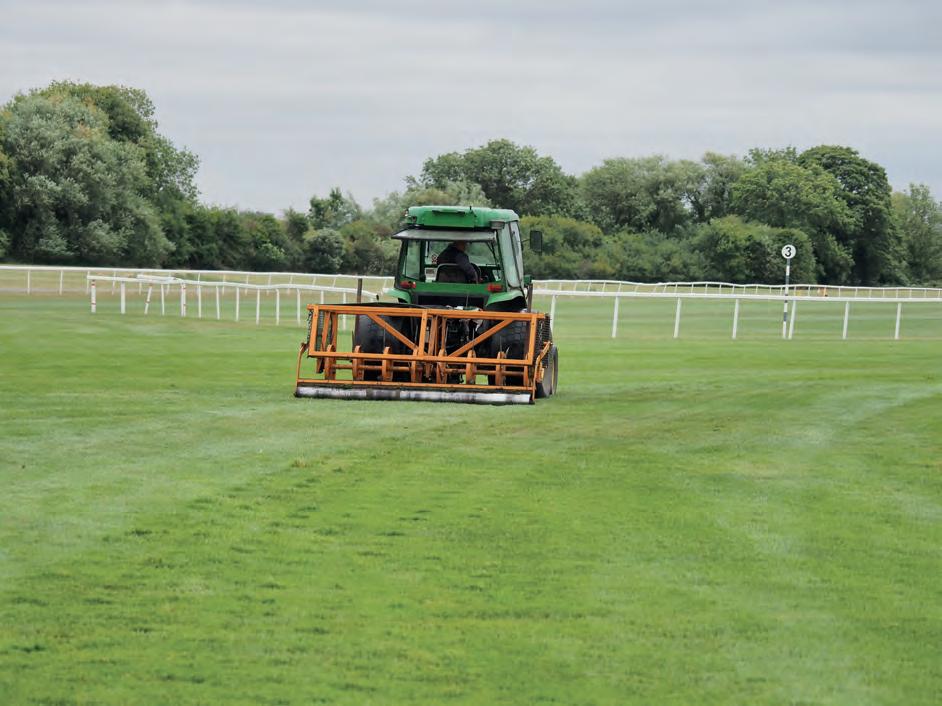

The idea is to provide a ‘galloping’ track that will require some stamina
Above Preparations underway for Windsor’s return to jump racing include slitting and aeration to get the best from the free draining soils in winter and encourage strong sward growth.
Below Plan of the new jumps track, showing the position of the fences.
Leading jockeys, including former champion Richard Johnson, have offered input into fence positioning, including proximity to bends and use of land to avoid any downhill approaches.
Padded hurdles have also been specified for their horse welfare benefits; again these are sited and removed for each fixture.
The first meeting on 15th December will offer a £100,000 prize fund and will be followed by a new racing ‘festival’ run in partnership with neighbouring track Ascot.
“The weekend of 17-19th January will see the inaugural Berkshire Million meeting,”

Charlie explains. “This will incorporate racing at Windsor on Friday, Ascot on Saturday and back to Windsor again on Sunday. There will be a prize fund of £1.3 million, and we hope to attract trainers from across the UK and Ireland. It should offer a good preparation for spring targets and become an important part of the campaign.”
Berkshire’s prime location, good transport links and plentiful accommodation should also encourage plenty of racegoers, he hopes, including those more used to summer racing.
“We’re renowned for our garden party atmosphere and we aim to bring some of that to jumping and hopefully introduce a whole new audience to the sport.”
Ongoing maintenance will feature more aeration to keep the surface open and access the naturally free draining soils. This involves regular use of a vertidrain interspersed with a shockwave when conditions are right.
A new fibresand canter down has been installed to take pressure off the pull up area beyond the winning post, which is also on a bend and improvements to the surface are already evident. An unexpected benefit is that horses are much calmer when released by their handlers as they are away from the hubbub of the course, improving safety and preventing excitable animals from ‘running their race before it starts’.

The winners’ enclosure features an enlarged area for the first-placed horse to accommodate large groups safely; lavish floral displays add to Windsor’s ‘garden party’ atmosphere, but also increase the workload.
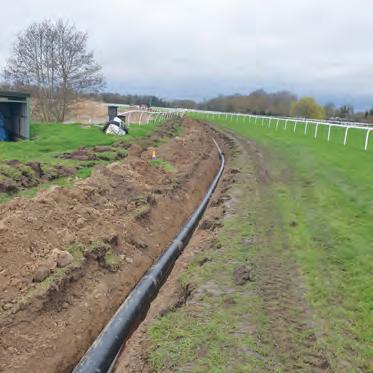
Investment in the irrigation system has already paid off, notes Charlie.
“We have a new Briggs diesel powered pump set and 3km of ring main, rated to 16 bar which feeds twenty hydrants. The new ring main has enabled us to add a 30mm Briggs boom, which covers the entire width of the track.”
The ability to water more efficiently, with less man hours, means that the process is also more


Left The irrigation system has been comprehensively updated, including a new ring main to work with a more powerful Briggs pump.
Right A new boom can cover 30m, watering the entire width of the track more efficiently.
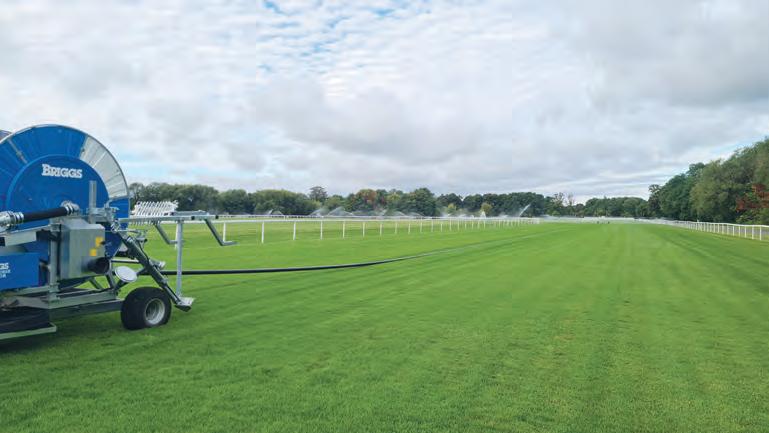
consistent, rather than requiring large amounts of water at one go; of benefit in a summer which has been drier in the South East than forecasts would have suggested, he comments.
Other kit additions have included two Case IH Farmall tractors, part of a batch of 14 machines of this brand purchased by ARC this year, two ride-on mowers and an aerator, with a new Toro tractor mounted mower on order.




























































































































We’re renowned for our garden party atmosphere
Groundstaff numbers have also been boosted with an extra member of the team added. Head groundsperson Steve Carpenter has been supported with the promotion of Chris Kelly to assistant head groundsperson.
“It’s a relatively ‘new’ team,” says Charlie.
“Most have been at Windsor just three or four years, but are all very enthusiastic and want to make their own contribution. We have the approach that ‘no idea is a silly idea’ and lots of developments, such as our new lavender lawn in the public enclosures, have come from ground staff suggestions.”
Charlie was the youngest clerk of the course ever to be appointed when he stepped up to the role in 2022, after working alongside predecessor Sophie Candy. But his family have always been in and around racing and he has depth of experience at Southwell, Newcastle and Doncaster.
He comments that the jumps racing plans have offered a huge motivation for the team, who have previously had an enormous workload in the summer followed by a
New portable steeplechase fences which will be towed into position ahead of each jumps meeting. They will be trimmed to the regulation
A dense, healthy sward, despite a busy

relatively routine winter.
“However, it’s not just the racetrack that we have to look after – there’s 169 acres of estate, and the gardening takes a lot of work as there are many small lawns that have to be mown by hand. We took the decision to prioritise high profile areas such as the winners’ enclosure and pre-parade ring for striping up before the meetings.”
Community and environmental work offers variety – Christmas trees are taken for recycling in exchange for a charity donation, and chipped to improve pathways for the Thames anglers, with bird boxes installed in surrounding woodland and trees removed due to ash dieback replaced with new saplings.
The track’s location means that it is also popular for non-racing events, which means keeping off-track areas spick and span all year round.
After the first winter of Windsor’s new jumps racing era in 2024/25, attention will turn to the next flat season which begins on April 28th 2025.
“We will have time for renovations at the end of February and beginning of March to give the fresh growth needed in time for the new flat season,” comments Charlie.
‘We’re hugely excited about this project and we’re confident that the investment by ARC and good groundsmanship from the team has given us the track condition and turf rooting depth needed for success.”
Article by Jane Carley.






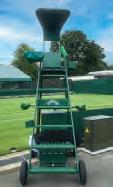



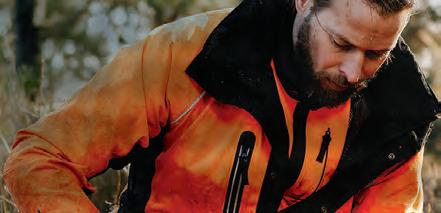
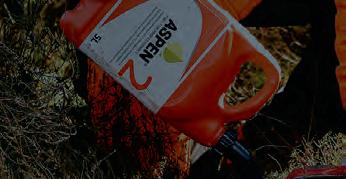


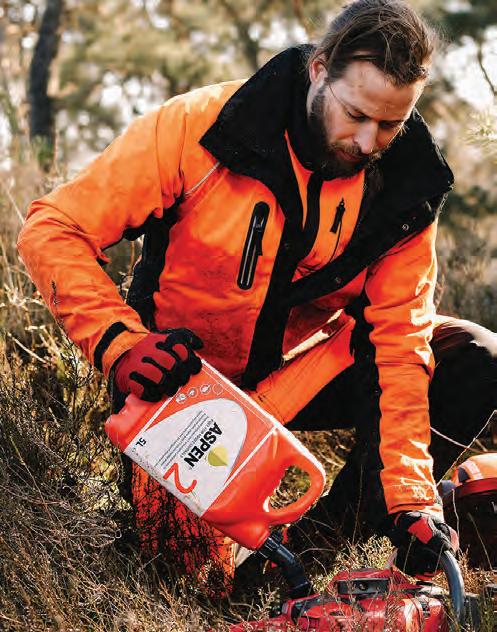





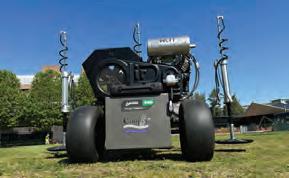
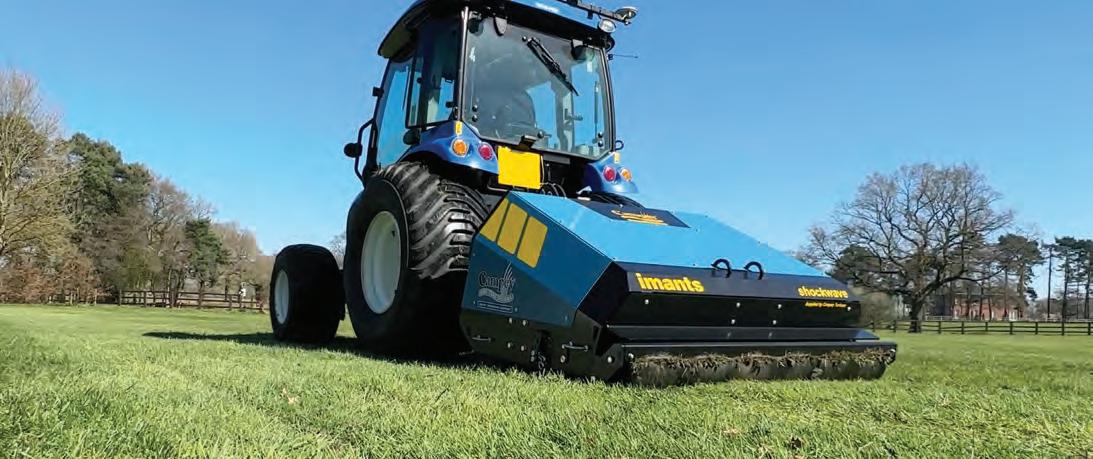
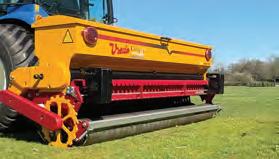
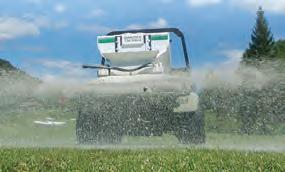

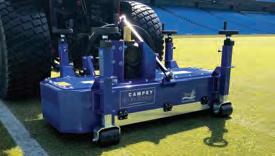
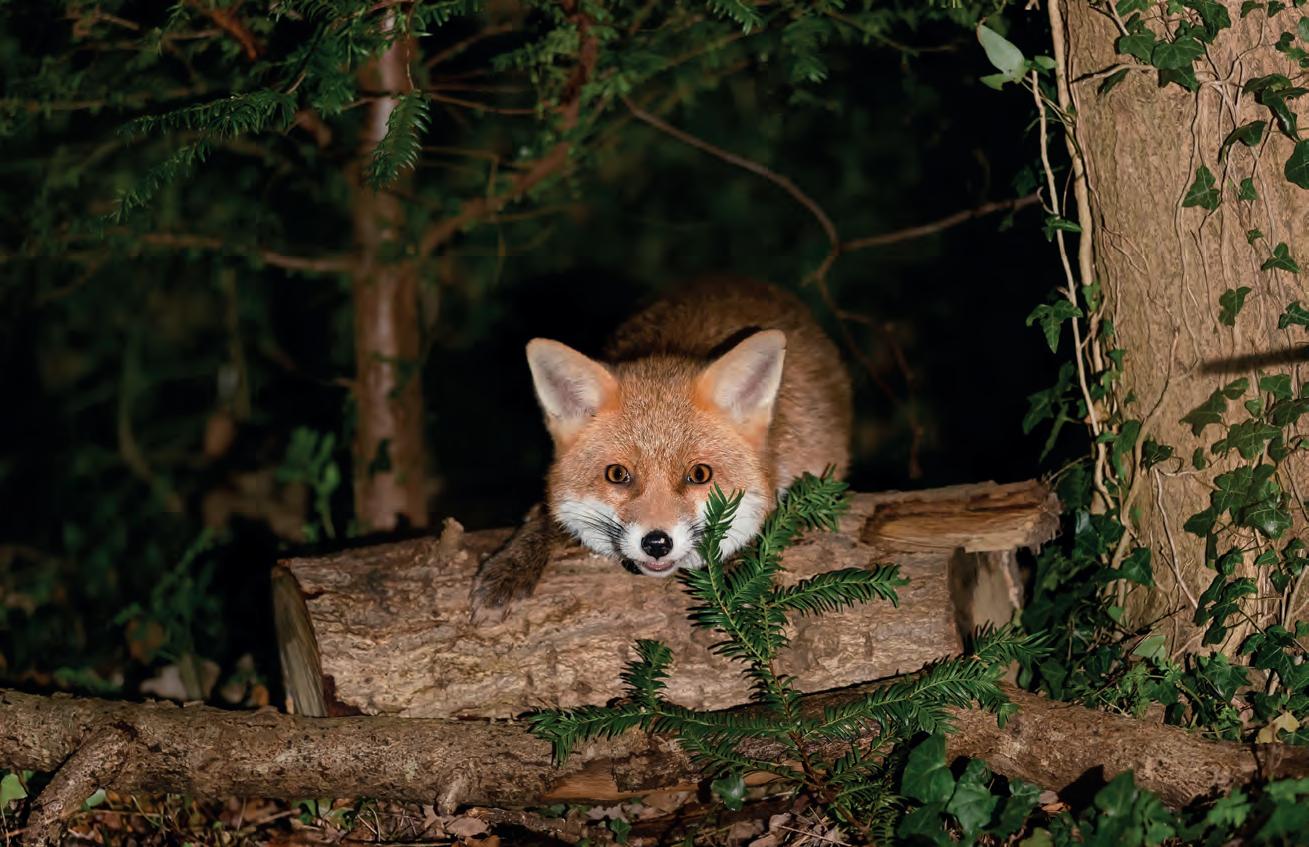
How do you find animals when you’re not there to see them with your own eyes; perhaps in the middle of the night, maybe at a location where you cannot stay, or access is difficult?
Atrail cam is a camera, five inches by three inches with a motion or heat sensor built into it.
This means that anything that passes in front of it triggers the camera to record video or pictures for up to a minute. They are also weatherproof so they can be used in all weathers. Using infrared technology to be able to see at night, you can discover what creatures are lurking in the darkness - opening your eyes to animals that
you wouldn’t usually see.
In 2016, I bought the Bushnell trail cam (as you see in the photo right) at around £200; that’s at the expensive end of the market. I wanted to place it under a bridge crossing a brook on the golf course where I worked because I suspected an otter had been visiting. I couldn’t sit comfortably to watch and wait so the trail camera was the answer. I left it for two days before I checked it and, to my astonishment, I had recorded an otter. The otter proved to be a



regular visitor to the same spot in future years, sometimes there were two. Most golfers would have no idea that we had otter on the course. As well as using the camera for finding hidden animals that you don’t know about, it can be used to monitor a particular group of animals that you know are there and you want to survey them to see how many there are. I used it to keep an eye on a local badger sett to see how many there were and to keep an eye on any activity. The cameras could also be used to discover what is leaving footprints behind in the mud or the snow, or what might be leaving regular droppings at a particular spot.

As well as the Bushnell, there are other trail cams on the market at a vast range of prices available at many different retailers.
Check these links to get an idea of what’s out there:
• shop.naturespy.org
• gardenature.co.uk/collections/trail-cameras
• digitalcameraworld.com/buying-guides/best-trail-cameras
• amazon.co.uk/Game-Cameras/b?ie=UTF8&node=454836031

Left Waxwing. Below December Moth.

Wildlife is there to be seen all year round including the winter, with some species occurring only at that time of year even when it is cold with frost and snow.

Redwing.
We have summer migrants that can be spotted around March/April and as they leave in the autumn, we start to see the arrival of our winter migrants. Large numbers of Fieldfares and Redwings (both a type of thrush) come over from Northern Europe/Scandinavia. They can be seen feasting on berry-laden trees such as Mountain Ash (Rowan). Sometimes the numbers of our resident Blackbirds and Robins are increased by birds from Scandinavia.

Fieldfare.
One of my favourite birds is a winter visitor to the UK and sometimes occurs in enormous numbers from Scandinavia when it is too cold, and the berry crop hasn’t done so well. The Waxwing is an unmistakable bird about the size of a Starling, orangey in colour with a crest and some black and yellow in the wings and tail. Waxwings always delight the people who come to see them. I saw a flock once of 100 on berry-laden trees in the middle of a town in Hertfordshire and about thirty on the golf course where I used to work. Supermarket car parks are often a good place for them to turn up.
With my interest in moths, I often get asked do you still see moths in the winter? Yes, you do but not so many species. Some moths only occur during the winter months such as December Moth (seen from October) or Winter Moth. The Winter Moth can often be seen in car headlights at night or on trees in a woodland. One morning in January this year at the Woodhall Spa Bracken
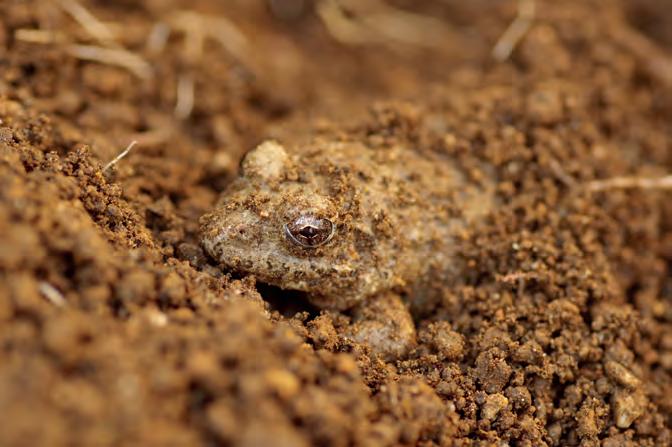
Course, I counted over 100 just resting on trees. I had never seen that many before. In early 2024 when we went through a really cold spell, I never expected to see any moths. But one morning at work after overnight temperatures of -6, one moth had braved it all and was resting on the wall by the security light.
Butterflies are not seen during the winter, but some do overwinter as adults such as the Red Admiral or Peacock and they can be seen flying on mild days. I once saw a Red Admiral on Boxing Day.
There are only three British mammals that truly hibernate, bats, hedgehogs and dormice, so you won’t see any of them unless they are disturbed. Other mammals like badgers and squirrels are just less active in the winter so are not seen as often. Fox and deer stay active all year round, as do small mammals like voles and wood mice. (They are often thought to be highly active under snow cover keeping out of sight of predators.)
Keep an eye out this winter and let us know what wildlife you find.
Article by Stephen ThompsonThe Conservation Buddha
If anyone has any questions on anything in this article please contact me via email: info@theconservationbuddha.co.uk

During hibernation, an animal’s heart rate and breathing slow. Their body temperature also drops. These changes allow hibernating animals to survive on less energy. An animal in hibernation may go weeks without eating or drinking. However, they do not sleep for the entire winter. They still need to get up occasionally to look for food and drink some water.
Hedgehogs make their own hibernation nests out of dead leaves, twigs, and feathers. Some hedgehogs will even hibernate in compost bins and beneath garden sheds.


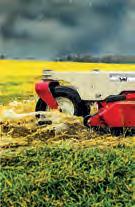
During the cold, dark winter months, animals may have difficulty finding food and water. Hibernation helps some animals survive during this time. These animals become inactive to conserve energy.
Bats hibernate during the winter when food is scarce, and their birth rate is extremely low. Bats frequently choose hibernation roosts in old buildings or even your home’s eaves.
Butterflies and moths will hibernate during the winter. They keep warm by finding a nice, safe place in a shed, garage, or attic.
Frogs will hibernate on the bottom of ponds, but if the pond is full of leaf matter, it can be fatal to a hibernating amphibian if the pond freezes.
Keep an eye out, but do not disturb.



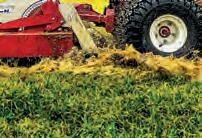




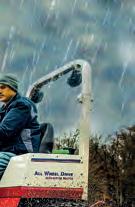




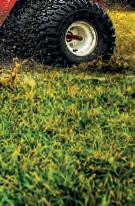




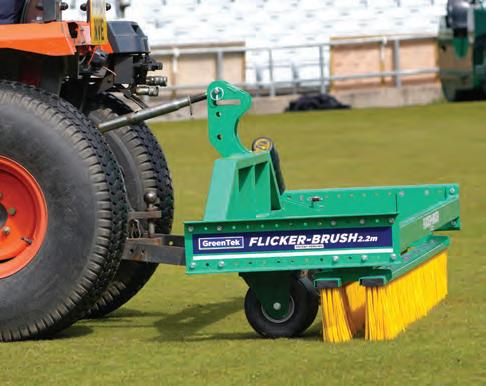









Sam Honeyborne has shown both resilience and innovation throughout his career. In this candid interview, he discusses the rise of AGS and its recent acquisition.
Sam turned back the clock for us to discuss where his passion for the industry came from: “I grew up on an arable and sheep farm in Gloucestershire with fond memories of the outdoors. A proportion of the farm was used to grow ryegrass turf for a local contractor - which was my first link to the industry and amenity agronomy. Straight out of college, aged 20, I joined Countrywide Farmers which is where the journey began.’’
In the following years, Sam worked hard before being given the opportunity to manage Countrywide Amenity in 2011: “My boss left and, at thirty years of age, I felt quite young
to be faced with the prospect of managing a business. I ran with the opportunity, focusing on the southwest but, for many reasons, Countrywide ran into some financial difficulty. I could have closed the doors and looked for a similar job within the industry, but we had fantastic staff and I saw an opportunity to do something different.”
The rise of AGS
Sam set up Advance Grass Solutions in 2017which he describes as a bold move: “Coming from Countrywide, we had the platform for a ready-made business. We wanted to be as close to a consultant for businesses as we could be,



but I think a lot of people thought we would only last a few months. I had no credit line as it was a brand-new business, so I was very grateful for the supply relationships I had built up over the years and all of the key suppliers supported us.”
He simplified the AGS vision: “We wanted to become the largest independent in the UK. Our vision was to upskill the staff, give them the latest technology and make them differentdifferent from the chasing pack. I always used to challenge the team and say: What can you give a customer that other people can’t?”
“The issue with being a good independent is the potential for your staff being approached. However good the company is, there will always be someone who can offer more money. I worked very hard to get everyone to buy into the project long-term, as I have learnt that staff are your business; they are the ambassadors for your brand.”
“I am a big believer in continual development, and BASIS and FACTS are the core training foundation, but it’s important for everyone to have continual discussions about further
training and development opportunities. I am there to support the team and I take an interest in the people working for me.”
Sam tips his hat to the staff when discussing the success of the business: “Everyone was part of the project. Many of the team came from Countrywide and I suppose they had a loyalty to me for saving their jobs. Lots of them doubled their revenue and have maintained that level of the business to this day.”
The launch of AGS was always going to be a risk for Sam, however, he is happy to see how far it has come: “My first target was to get through the first two years and, in 2019, the business had started to gain momentum… but that came with its challenges. When the rise of a business is going that fast, you are spread thinly. I didn’t
Far Left Left to right: Joe Hendy - Agrovista Amenity Specialist, Marcus Cassidy - Head Groundsperson at Swindon Town FC and Sam Honeyborne.
Left
Top Sam with his grandfather on the farm.
Bottom Sam on holiday with his children.
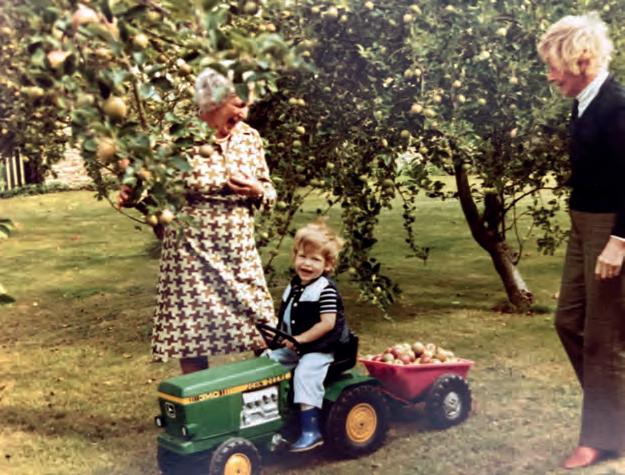
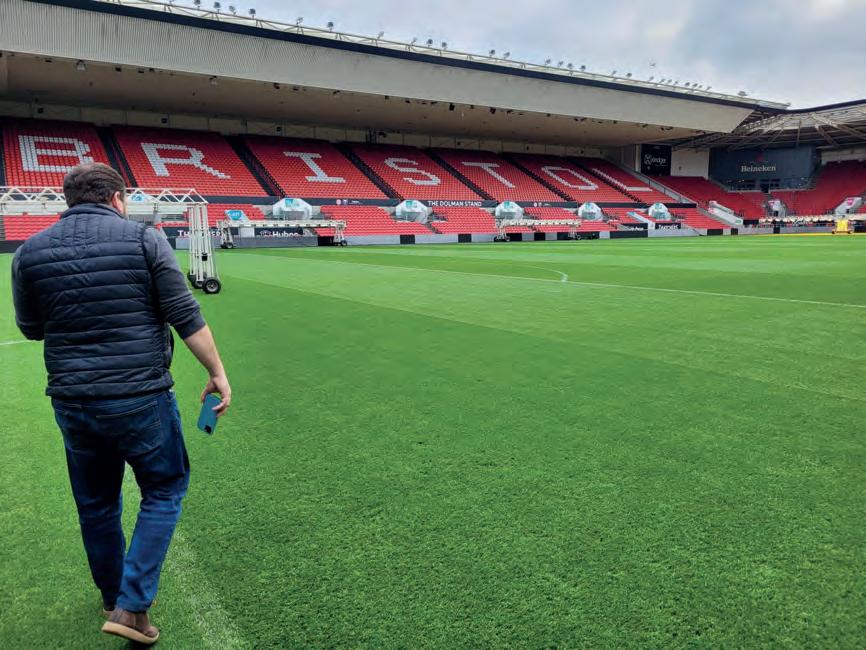
want to let people down and it was difficult to maintain high standards, as well as fast exponential growth.”
“It was obvious I needed to recruit and I wanted people who had a range of turf backgrounds - not just golf - so they could have a meaningful impact on the strategy of the business. Year one budget was £4 million, and we achieved just over £5 million.”
It isn’t all easy
He highlighted some of the other challenges for the business: “The main one was the pandemic and, like so many, it was a very difficult time for us. I had over £1,000,000 worth of stock in the
warehouse, which I had committed to with a relatively young business and I had about eight weeks to sell it. I have felt pressure throughout my career, but nothing like that. Thank goodness golf was allowed to open first!”
“We worked tirelessly throughout that period. I was on my laptop more or less day and night, but that’s what it is like when you are starting a business, and we didn’t know what would happen. Thankfully, we had a loyal customer base, so we were still achieving sales.”
Sam draws on the phrase ‘cash is king’: “The number one challenge for a new business is cash flow. When you see your bank balance jumping by a few £100,000, you think, that's fantastic. However, it goes in minutes because you're paying off your creditors as quickly as money is coming in, not to mention wages, expenses and equipment etc.”
“You need the money in place at the start to ensure long-term success and a strong portfolio is essential; why should that customer buy from you? We focused on products which were unique to us in order to gain market protection.”
“The next step for AGS was further geographical growth, specifically into northern England, but that required investment. We looked at a new five-year plan, considering all viable options and it was clear that Agrovista Amenity would be a very suitable long-term partner.’’
Sam continued: “I chose Agrovista as a way to expand for the future. They have a strong market in the midlands and the north, whilst ours was in the southwest & Wales. We still maintain our independence within Agrovista as they allow us to do our business and recommend our product range… albeit under the banner of a much larger organisation.”
Sam summarised the importance of ethos when discussing the move to Agrovista: “We share the same opinions on many things and both businesses have a similar mindset. It was also important that the employees were protected and I’m sure we will have a long and successful company for years to come. The future is exciting.”
Article by James Kimmings.







Weather conditions have been incredibly wet and the job of turf managers has become seriously challenging over the last few years. That ’s where Dispatch Sprayable comes in. Proven to signi cantly improve the way water moves down through the soil, Dispatch Sprayable ensures fast, e cient penetration of rainfall resulting in rmer, drier playing surfaces.

During the summer, as he completed a 579-mile walk, Cambridge United FC’s Head Groundsman, Ian Darler, set his sights on a new charity challenge.
TpThis time, it was in aid of a local mental health charity: Cambridgeshire, Peterborough and South Lincolnshire (CPSL) Mind.
Having previously walked the equivalent of London to Qatar for the 2022 World Cup, Ian was well prepared for this epic charity mileage count. The aim was to walk the distance from the Abbey Stadium in Cambridge to Berlin, the city hosting the Euro 2024 final.
Ian reflected on the challenge: “The London to Qatar challenge was my first big walk. It was immense and loads of people came out to support and take part. CPSL Mind approached me to do the Cambridge to Berlin walking challenge, and the plan was made to cover just over seven hundred miles.”
Ian spoke about one of his close friends as one of his motivators for taking on different challenges: “One of my friends came to see me, and he was buzzing about Cambridge United being in the playoffs and had just secured a new job…. the very next day, he took his own life, and I still feel guilty to this day.”
“On reflection, I showed the same behaviour when I was battling with my own mental

health; I had people at work saying how happy I seemed, but I was working hard to hide my issues. I always say, do not assume that everyone who is suffering from mental health and depression will be miserable.”
He alluded to his mental health experience when discussing why he wanted to start the


mental health challenges: “My challenges after my accident have been a big motivation as there was limited help from my work. At the time, mental health wasn’t something that people spoke about. You feel alone when you are in that mental space and you don’t want to tell your family or wife; you feel weak, not the person you should be and it takes all confidence away from you.”
“It is okay to have a bad day, but it’s not okay to have several bad weeks. The pressure builds up, you start to become frustrated with what’s going on, and you are covering up how you feel and hiding it - that’s when you need the support from those around you. I always say to ask someone if they are okay twice: normally the second time they’ll tell you.”


TIM WALKER - HEAD OF PROGRAMMES, CAMBRIDGE UNITED FOUNDATION
Tim Walker from the Cambridge United Foundation highlighted the work that has been done in the community to improve wellbeing: “We are proud to represent Cambridge United within the community, taking the vision about mental health from the club into the local area. Mental health and wellbeing underpin everything that we do across all of our programmes.
When developing a new project, we often think - How is this going to benefit someone’s wellbeing? We work with participants from the ages of 9 to 99; for young people, we run mental health workshops where we try and reduce the negative stigma around the topic, and for older people we run a dementia café to not only support the individuals but also the carers and family members. We want to create a positive environment for everyone around the club and the local area.”

On working in turfcare, Ian said: “I was a true groundsman - the first in and last out the door each day. I have always been honest about the journey after my accident and how I struggled with pain which caused me to lose sleep. I later got diagnosed with PTSD, which made a lot of sense to me. Things started to change when I had my book published (Life’s A Pitch)… the chapter called “Life Changing” has made many people come forward and speak to me.”
With the tough weather conditions increasing last season, Ian had his first game in twenty years called off. He commented: “Someone (on a well known media sporting channel) suggested that Cambridge United were a disgrace because we didn’t call the game off earlier. If they had visited at 3pm, the pitch looked great and the weather was fantastic. By 6:15pm the rain had

Cambridge United Club Chaplain, Ben Barton, commented on the wellbeing progress: “There are two chaplains at the club; I look after the staff and the other one looks after the players. That’s an indication of how seriously we take the welfare of everyone in the Cambridge United family. I act as an independent listener which is outside of line manager structures, intending to look after everyone who is associated with the club. We value supporting the mental health of our staff… one of the ways we do that is something called Thursday Time Outs, which is once a month away from the desk to do something social, allowing staff to clear their minds from work and focus on themselves.”
started; but then by 7pm, I told the chairperson that we could have a challenge. We had two inches of rain in about 30 minutes, so at 8:10pm the referee had called off the game. How do you legislate for those types of conditions?”
Ian alluded to the European Championship in Germany last summer when discussing the extreme conditions that can influence the job: “The weather at times was shocking and a lot of those pitches had been used off the back of the previous season. Some of them only had about five weeks to prepare, but when you aren’t in the turfcare business, you will never understand how things work. Climate change is putting a lot of pressure on people and you do sometimes feel threatened when you can’t help the elements.”
He highlighted improvements at Cambridge United regarding mental health and wellbeing: “The club have progressed a lot; Director, Mr Godrick Smith, has done a lot of work to improve mental health in football. We have regular meetings to make sure that everything is okay, which includes all sectors within the club”
“We also have many resources on hand. We have ambassadors that people can go and speak to if they are struggling. Go Vox sends out an email to all staff to check in on their mental health and you are asked to complete a survey. We’ve also got Mynurva, which every member of staff has access to, and which gives you a clinical representative that you can see three times a season. In the season just gone, the club decided to extend that to season ticket holders, which I think is a great initiative.”
When advising about wellbeing facilities at
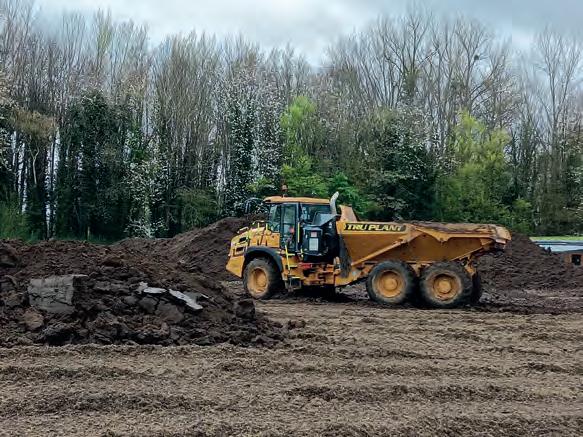

work, Ian said: “Every employer needs to be on board with health and safety and mental health. If you are struggling with your mental health, you are potentially not concentrating. An employer should never be saying to just get on with it - that is not how life is. There is nothing worse than not knowing where to go when you are feeling helpless and even suicidal. Thankfully, I now have a boss who understands turfcare and wants to support us, but I have
It is okay to have a bad day, but it’s not okay to have several bad weeks
sympathy for those who are getting the bad end of the stick.”
He concluded with his top tips for clubs wanting to begin a wellbeing programme: “I would firstly ask myself, do I have anywhere I can go for help with my mental health at work? If the answer is no, then you need to take a look at it. Even going online and having a look for information is worth doing.”
Article by James Kimmings.


A fully automatic relief spin grinder, designed to deliver precision grinding at its best.
It features automatic traverse, indexing and in-feed ensuring that every grind is accurate and consistent, returning cylinders and bottom blades back to the original manufacturers specification. The cast bed provides stability and the heavy duty linear bed rails ensure smooth and accurate traverse of the grinding wheel.


































































For more information or a no obligation demonstration call 01332 824777 or visit www.huntergrinders.com Proudly






















It’s time to embrace
Recent innovations have trimmed away the limitations of robotic tools, making it the perfect time for the industry to invest in this new future-proofed technology.


With new players entering the market, robot mowing has never been a more feasible alternative to traditional turf maintenance methods. Here’s how it could help you…
By choosing robotic, you can instantly reduce your carbon emissions, while effectively managing all types of turf conditions, including challenging wet states like we’ve faced this year and will probably continue to face with climate change accelerating.
Rather than replacing staff, robotic mowers give your team the freedom to concentrate on other areas and issues – providing extra time to train, upskill or simply do the things they’ve always wanted to get around to. These mowers also go where other machines won’t dare to tread, so you can manage areas that would be too wet to cut with traditional heavy machinery in winter.
With low noise and no dirty emissions, robot mowers help protect the health of your team members, making the environment more pleasant for everyone. Plus, with no noise interference, golfers can enjoy their game in peace. This benifit also applies to any maintenance teams needing to cut grass near homes, offices, hotel grounds, or educational institutions.
Robot mowers reduce worm casts, mole activity and compaction by mowing at any time of the day or night. When your staff clock off, robot mowers keep working, extending
the amount of maintenance that can be accomplished in one day.
Create a golfer’s paradise
The advantages of robotic mowing for golf courses includes easy maintenance of rough and semi-rough cut heights –removing a monotonous task for staff and improving the experience and speed of play for the players. Plus, less time searching the long grass for lost balls!
Stay innovative
As technology continues to improve and evolve, so do the benefits of robotic mowers – with some now available which don’t rely on costly and inconvenient onsite aerials. There are also mowers that can now work under trees – a common feature of many traditional sports grounds such as cricket fields and golf courses.
Save money and build value
The financials stack up too. A quick bit of maths shows that for the equivalent of one staff member, just above minimum wage salary, three robots can be leased. While the savings in diesel can be reinvested into training and incentives to attract and retain the best talent.
Robotic mowers are an innovative solution to the current and future challenges we face in the industry. When it comes to exploring your options, knowing the right questions to ask will help you find the perfect fit for your needs.



















Ian explained why now was the right time for a different opportunity: “I initially applied for this role simply because I saw it as personal progression - plus it's a bigger club with more staff, equipment and resources. After speaking to the general manager at the interview, I realised the club's ambitious, progressive, all-round professional approach and that lined up with my personal ambitions and

future goals.”
He also reflected on the challenges that have come with change: “A new role at a new club can always bring challenges. The greenkeeping team here have all come on board with my plans and ambitions for the course and are all looking forward to the journey we are going to take.”
“As always, one major challenge is the weather with wetter conditions becoming what we expect now. I've put a comprehensive drainage


plan together to run alongside the already extensive drainage system and the club have supported me with purchasing new equipment for us to commence the project. We've got a new gravel bander, AFT 45 whizz wheel kit and ordered a new Dakota 410 trailed 2-tonne topdresser for April 2025.”
A positive change is good
Ian said: “Change can be a really good thing - as long as you do your due diligence into the potential new place of work. Moving from somewhere you are happy and comfortable at can be a stress and also a risk, so making sure the change is right for you is seriously important.”
“Having said that, change at times can be necessary. Previously, I stayed in a role for too long, where I was not supported and felt stuck at a place that didn’t deserve my loyalty. As soon
I want everyone to be a part of the journey and feel involved with every step

“While completing my GCSEs, I began as a summer helper at my local course; Blundells Hill Golf Club, Merseyside and I loved everything about it. Not just the work and working outside, but the team environment and the banter that comes with it. I served an apprenticeship here and completed NVQ level 2, then began a Foundation Degree at Myerscough College - which I later finished whilst at my next club, Widnes Golf Club. Whilst there, I was promoted


and the utility vehicle as well. It's the first time I've ever had a fully electric mower, which is our Toro greens mower and it's an excellent piece of kit; giving an awesome cut and finish. The battery life is surprisingly good too… easily handling a double cut of the greens.”
The team reaction and your management “I'm very much team-orientated; I want everyone to be a part of the journey and feel involved with every step. The first thing I did was to ask the team where they felt they were unhappy with things, and most of the issues were easily ironed out. I told the guys where I wanted us to be in five years and every one of them jumped straight on board with the ideas.”
He alluded to the importance of developing a team: “Upskilling the team has been a major positive that I've implemented, with great feedback from the team. Things like starting our youngest member on his NVQ level 2, taking the time to show everyone how to use equipment properly and more efficiently, working alongside them and being hands-on rather than managing from an office. This has made the team mentality very easy to establish. Simple things like making sure we all have a uniform – to not only show members we are the greenkeeping team and to look professional, but to also visually appear as a team around each other and show that we are all in this together.”


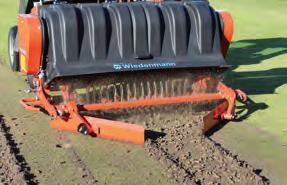

Speed, precision & easy operation. 11 dif ferent models, 30 years’ know how and exper tise. Be it extra deep, super light or the nation’s favourite GXi8 HD, we’ll find your Terra Spike.

BGL Group Head Greenkeeper, Rob Surgey, tells us why there’s no better time than the present to make meaningful changes to how we work and what we do each day.
BGL (Burhill Group Limited) owns and operates ten golf clubs around the UK, making them one of the country’s major golf operating groups.
We start by asking Rob: what is it like being the Group Head Greenkeeper for one of the country’s most significant operating groups?
I oversee the maintenance practices at all clubs in the group, which is really enjoyable. We
regularly share ideas and tackle issues on our course manager WhatsApp group – ranging from invoicing to sourcing spare parts for machinery. We also try to share equipment across the ten sites whenever possible, so it’s very helpful to be able to call on others in the group for support.
Our courses are spread around the country, making it interesting to compare monthly rainfall statistics from site to site. We meet at least once a year for a meeting, inviting industry speakers to cover various aspects of

greenkeeping, then in the evening we always go out to socialise, which is great fun.
I like to think that the course managers in the group feel they have someone to talk to if they’re facing challenges at work; they can always phone me or other experienced members of the team for advice. We aim to support each other as much as possible.
Sustainability is a key focus for BGL. Can you explain the company’s 7-step process to achieving carbon net zero status?
We have identified several key pillars that, when combined, will drive each club and the entire 10-club BGL Group towards achieving carbon net zero status. These pillars include conserving resources, fostering nature, responsible procurement and taking climate action. We are demonstrating our commitment through
initiatives to reduce carbon emissions such as purchasing renewable energy, new electric greens mowers and utility vehicles, enhancing habitats, ecology and carbon sequestration through planting wildflower areas, and arranging bird surveys in collaboration with a local ecologist and ornithologist.
How does your role differ from being a head greenkeeper at one venue?
I have the opportunity to visit ten different sites across the country, each with its own unique challenges. This gives me a broad range of experience across various projects, whether it’s building new reservoirs, undertaking bunker renovations, addressing drainage issues, managing irrigation or developing driving ranges. There’s not much I haven’t encountered, but every year something new comes up!


Every one of us can contribute to the health of the planet, whether by carpooling, walking to work, planting more bee-friendly flowers or making more significant changes. My family recently switched to a fully electric car and we had cavity wall insulation installed in our home within the last 12 months. I understand that some things cost money, and not everyone can make those changes, but every small action makes a difference. At BGL, we feel that we have a responsibility to look forward and make positive changes for the environment and we’re proud with the work that we have done, and are doing, in the pursuit of carbon net zero.
As a group, we are committed to delivering the highest quality service and value in all areas of our facilities. All our clubs and my team are fully focused on these priorities and doing everything we can to keep moving forwards, while remaining aligned to wider business goals. What has BGL done so far to push towards greater sustainability?
A lot has happened and is happening! We have calculated our Scope 1 and 2 emissions and are now working with our suppliers to gather data for Scope 3. We’ve also mapped our courses and surrounding land areas to calculate our carbon sequestration. The total of Scopes 1, 2, and 3,


minus our sequestration, will help determine how close we are to net zero and guide further positive actions.
In the meantime, BGL operates on green tariff electricity and gas contracts across the group. We’re investing in solar energy projects,
including Birchwood Park and other locations. We are actively removing gas from commercial kitchens and have made significant progress in sustainable irrigation. Currently, only one of our ten clubs - Abbey Hill in Milton Keynes - does not have a reservoir, but we’re working on that! All nine other BGL clubs use sustainable water sources for irrigation – not mains water!
Importantly, we are working with the water sector and environmental charities to assess the likely impacts of changing water availability that may result in reductions to our abstraction licences in the future and seek alternative water
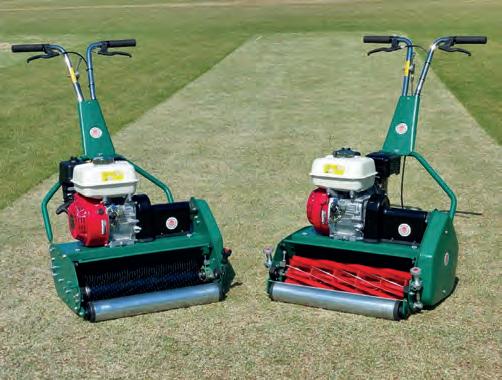


Below Rob Surgey, BGL Group Head Greenkeeper.
sources. An example project is the restoration of the River Ver at Redbourn Golf Club, where we are working with Affinity Water, Herts and Middlesex Wildlife Trust, Environment Agency and club members. The goal is to attenuate surface water flows to improve water quality, ecological condition, improve local flood resilience, reduce flooding on areas of the golf course, and potentially offer additional irrigation sources.
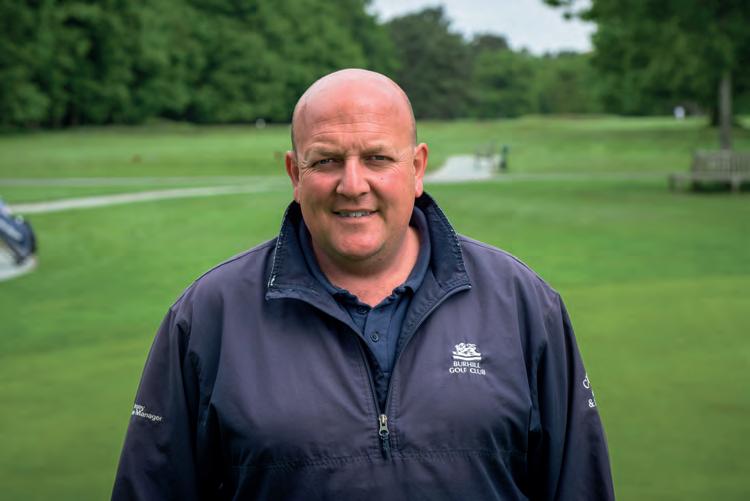
I began my career in greenkeeping at the age of fifteen, starting with weekend work removing dew from the greens at my home club Alfreton, in Derbyshire. After completing my A-levels, I attended Reaseheath College in Nantwich, where I pursued an HND in Golf Course Management. This was a three-year sandwich course, and during the middle year, I completed work experience at the Forest of Arden. While there, I had the opportunity to work at the British Masters Tournament and found the tournament setup particularly enjoyable.
Sustainability and successful golf operations are not mutually exclusive and we are keen to show the benefits the golf sector can offer the natural environment, local communities and golfers.
How did it feel to be the first multi-course operator to achieve GEO accreditation across all your sites?
It was a great feeling, and we were very pleased with the outcome. When we first started the accreditation process, it seemed quite daunting, but we were pleasantly surprised by how much we were already doing. We had to gather data, but this was relatively easy since we keep thorough records of all aspects of the businessnot just the golf courses.
What has BGL got planned for the future?
The sky’s the limit! Our next landmark is to be carbon net zero – we’re working hard towards it! We have worked hard to identify our Scope 1 and 2 emissions, fuels we consume across our sites, and retained consultants to undertake energy efficiency reports to
After finishing my HND, I returned to the Forest of Arden for a short period before moving to Wentworth. Over three years at Wentworth, I worked on three PGA Championships, three World Matchplay events and three senior tour events. With the goal of advancing to a Deputy Course Manager position, I moved to Moor Park for six months before securing my first Deputy Course Manager role at Wycombe Heights Golf Centre (part of the BGL Group), in May 2002.
After a couple of years, I was promoted to Course Manager when the previous one departed. I spent three years in that role at Wycombe Heights before moving to BGL’s flagship venue, Burhill in 2007, where I’ve been ever since.
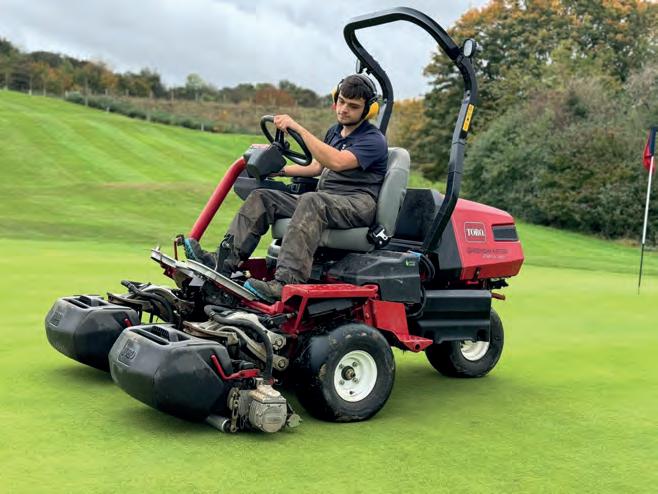

reduce consumption through technology and engagement. We have already transitioned to Certified Green electricity, and are moving to Green Gas contract in 2025, with onsite solar PV projects being commissioned to provide some resilience to energy price fluctuation.
We are aware that Scope 3 emissions is the next challenge, and we are well underway with

creating the baseline emissions from our Value Chain – primarily, emissions resulting from everything we purchase, and several other areas not picked up by Scope 1 and 2.
On the other side of the Carbon Balance Sheet is quantifying the CO2 sequestration from our land, identifying habitat size and quality, and work with consultants, The Woodland Trust and Wildlife Trusts to increase natural habitat, improve management of existing habitat and quantify the increase in carbon sequestration and Natural Capital Value our courses offer in a robust, methodical way using science-led processes.
BGL is committed to providing a great customer experience, improving mental and physical health; in addition to working with stakeholders to improve air and water quality, improve flood resilience, enhance biodiversity, and highlight the art of what might be possible.
Under new leadership, we’re in the process of reviewing all of our business activities in order to build a robust plan to build on the huge success of the last few years.
































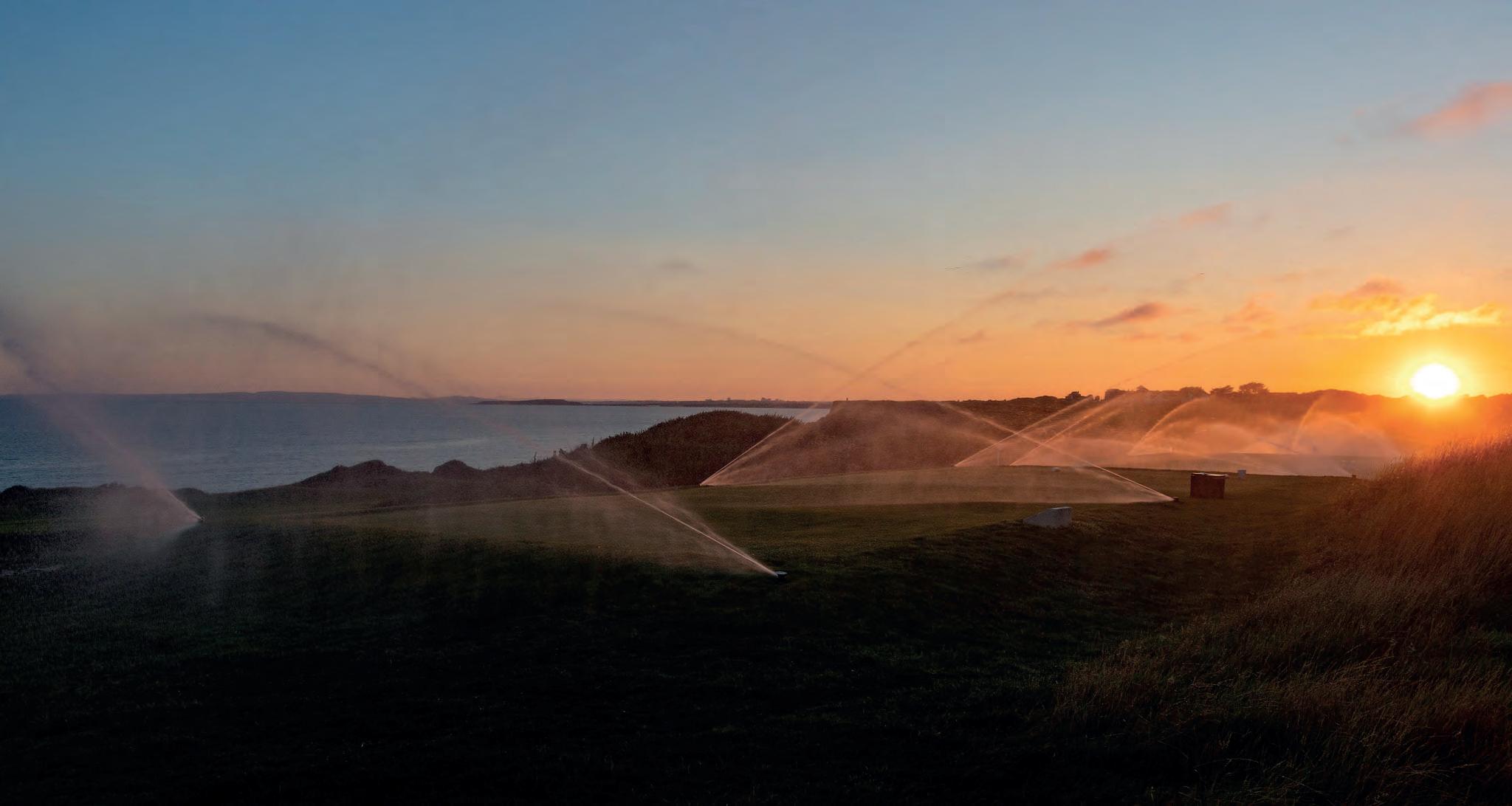

don’t exist, yet
The Toro Company’s Andy Strother discusses the design process Toro sprinklers go through.
Sprinklers, they may be small, but they are mighty, and they have the power to transform your sports surfaces with precision, accuracy and efficiency. Here we speak to Andy Strother, Engineering and Product Management at The Toro Company, about the design process Toro sprinklers go through, from start to finish, to make sure the UK’s sports customers have the best range to choose from for the specific requirements of their venue.
How are ideas for a new sprinkler generated?
The process of generating new sprinkler ideas primarily revolves around customer feedback and market needs. Direct interactions from the customer – interviews provide immediate ideas, while indirect feedback comes from social media, sales channels and installation contractors who relay customer requests and complaints. These insights are crucial for understanding known customer requirements, solving specific problems or introducing new
features that enhance customer satisfaction. Technological advancements play a supporting role rather than being the primary driver of new product development.
How heavily do you rely on research and development?
Research and development (R&D) is fundamental throughout the entire product development lifecycle. Research phases focus on conceptualising products and integrating new technologies, while development continues through design, evaluation and manufacturing trials. The process typically involves a lead product manager, design engineer and various support teams to ensure the product meets or exceeds expectations.
On average, how long does the process from start to finish take?
The timeline for developing a new sprinkler design averages around two years, varying based on complexity. The most challenging aspect often lies in nozzle development, requiring a balance of scientific understanding and practical application to optimise water

distribution efficiently. This stage involves extensive modelling, simulation, lab testing and field trials to refine nozzle performance.
Qualification testing constitutes the most time-consuming phase, especially when design issues necessitate repetitive prototyping and testing. Despite its duration, this process ensures the final product meets stringent performance and reliability standards before production.
What sets Toro apart from the competition in this process?
Toro distinguishes itself in the industries in which we operate through a strong corporate culture and extensive institutional knowledge among its employees. This collective experience and dedication contribute to consistently highquality products that endure in the market.
What is unique about the process?
One unique aspect of Toro’s development process is its specialised testing facilities, designed to simulate real-world conditions such as golf course environments. These facilities enable Toro to validate product performance under various stressors like contaminants in water and pressure surges, ensuring robust performance in diverse operational settings.
Left Toro sprinklers have the power to transform your surfaces with precision, accuracy, and efficiency.
Below Toro sprinklers can be adjusted for precise water coverage.

Toro irrigation systems are known for their longevity; what can you tell us about the components/quality of the materials used that contribute to that?
The longevity of Toro’s irrigation systems is bolstered by thorough material evaluation and selection tailored to each component’s performance requirements. Before adopting new materials, Toro rigorously tests their reliability to ensure they enhance product durability.
How long is the infield testing process?
Infield testing duration varies depending on product specifications; for instance, golf rotor sprinklers undergo multiple years of rigorous

Above Reesink Hydro-Scapes supports the Toro choice in the UK with training, backup and support, and demonstrations. Below Toro sprinklers: B series with Turf Cup, left, and Infinity.
testing. While infield testing cannot conclusively determine a product’s decades-long lifespan, Toro uses accelerated lab testing to approximate real-world conditions and validate product longevity.
What kind of adjustments might typically be made during R&D or infield testing?
Adjustments during R&D and infield testing often involve refining design elements to meet performance specifications. For example, adjustments may be made to nozzle designs to optimise water distribution or to seals to prevent leaks discovered during field testing. These adjustments ensure that products meet the exacting standards set during development.
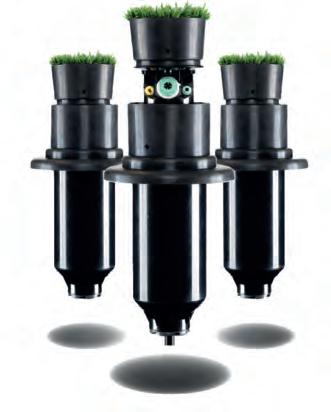

What are the stages involved in the design process?
Most big projects will include the following product development stages:
Concept: what are we trying to develop?
Feasibility: can we bring this concept to market, and is there a market for the product?
Development: engineering design development, modelling and simulation, prototype creation, evaluation, and repeated testing
Production: qualification testing complete, specifications and requirements met, manufacturing pilot run, marketing launch
Post-production: evaluation of customer acceptance, product performance, and distribution channel
What’s the feature that has bought the most change?
Two key features have significantly enhanced golf course irrigation: the integration of a valve within the sprinkler head and a control system that allows for individual programming and control of each sprinkler. Working together, these innovations enable greenkeepers to apply water with greater accuracy and precision, leading to water and energy savings as well as improved playing conditions.

What’s been the benefit that has made the most impact?
Another impactful benefit for greenkeepers and golfers is the continuous improvement of central control systems. These systems now have the ability to automatically adjust irrigation schedules based on sensor data or weather conditions, all of which can be accessed from a mobile phone almost anywhere. This marks a significant advancement from just a few years ago. Despite these advancements, the central control system remains as simple or as complex as the greenkeeper desires, still managing essential tasks like daily programmed
In your opinion, which Toro sprinklers or features of Toro sprinklers are simply unmatched?
Toro golf sprinklers are among the most versatile products in the golf irrigation industry. Their factory settings are optimised for typical use, ensuring excellent performance in most golf course situations. Versatility is crucial because golf courses present challenging and diverse environments. The ability to adapt water distribution to specific, demanding areas is a significant advantage for greenkeepers. Examples of this versatility include adjustable main nozzle trajectories and customisable nozzle sets. These


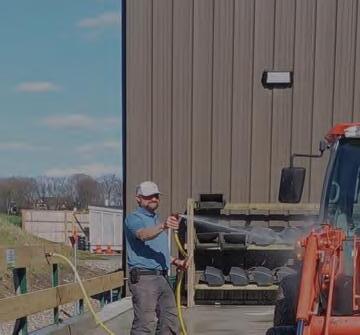


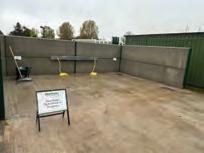
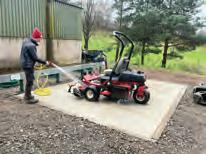

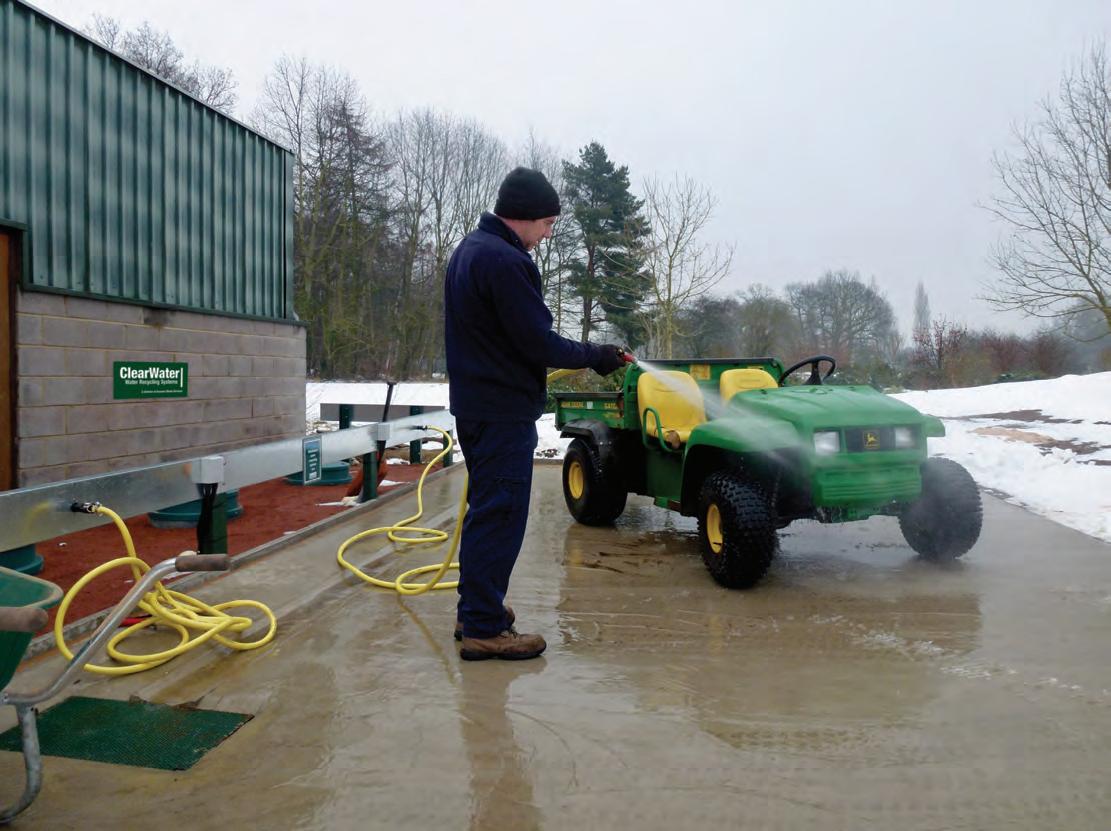
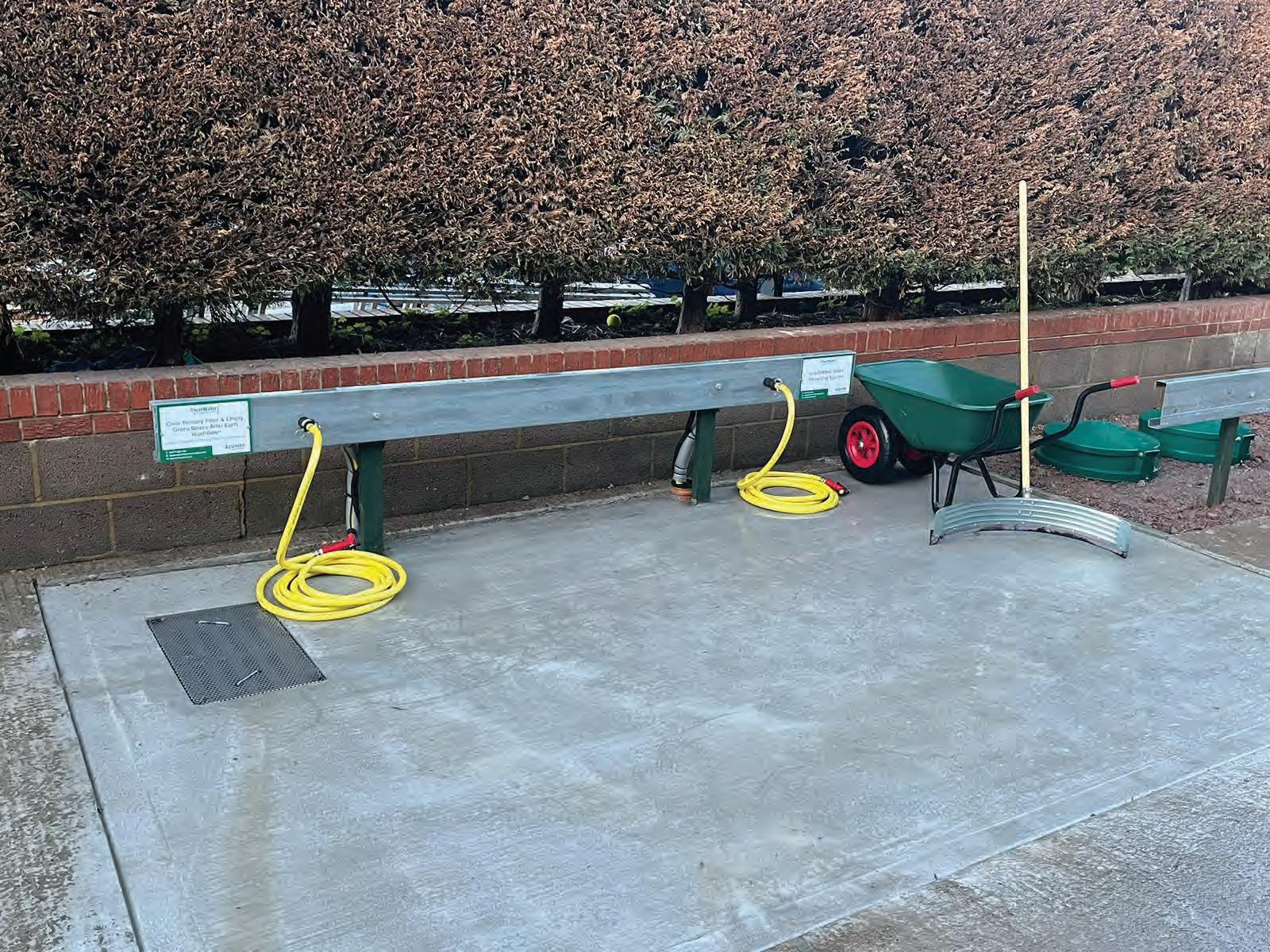


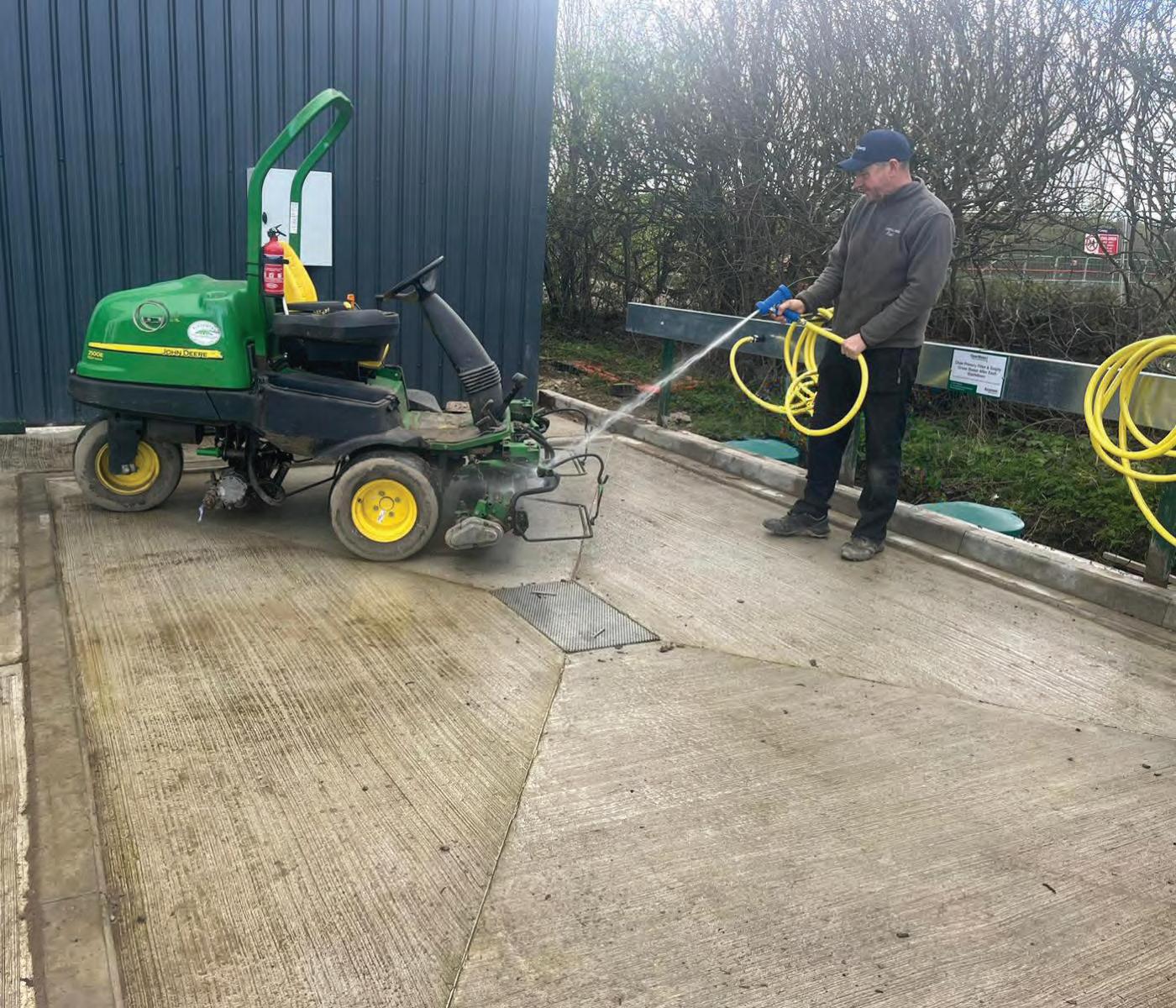
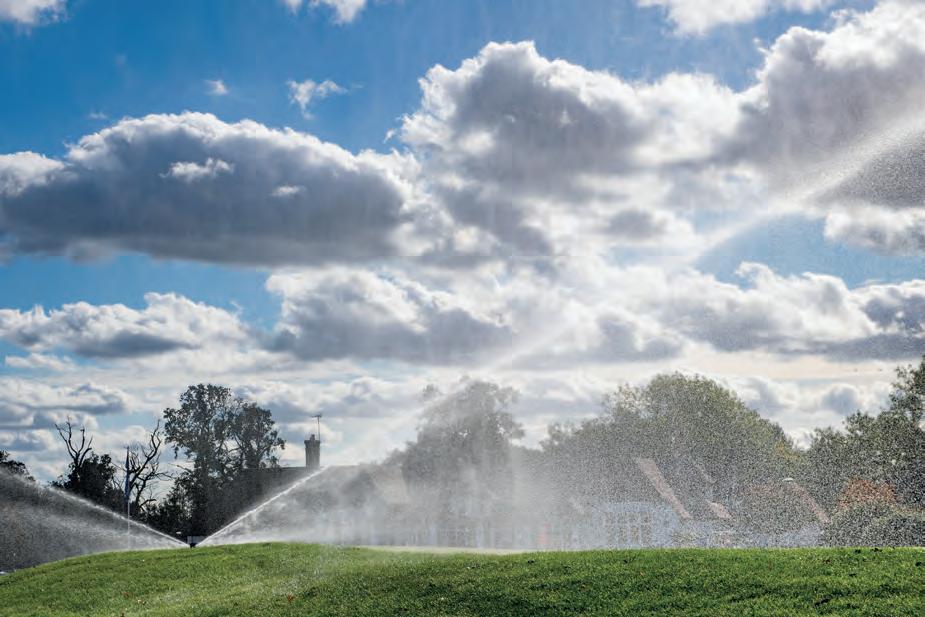
Do you have any proven facts on savings Toro sprinklers might have led to (water savings or energy efficiencies for example)?
Case studies I have reviewed demonstrate approximately 20 percent annual savings in electricity and water resulting from a golf irrigation renovation. An example is a 36 hole property, Sun City Mountain Vista, in Palm Desert, California, USA. After a complete irrigation system renovation, water savings were documented as well as improved soil
The future of sprinkler design will likely follow two paths:
1. Refining existing products: This approach involves continuing to improve the large golf sprinkler products currently available. Enhancements will likely focus on:
• Improving water distribution uniformity
• Enhancing reliability
• Adding versatility features to help greenkeepers adapt water application on golf courses
2. Developing innovative solutions:
This path involves creating products and services that don’t exist today.
This more disruptive approach will require reimagining how water is applied to golf courses and critical areas within them, tees and greens for example.
Irrigating with Toro brings the latest technology to your venue to ensure reliable and efficient water usage
We are thinking outside the box and constantly engaging with customers to understand where we can make the most significant impact in helping them manage water efficiently and provide excellent course conditions for their members, guests, and customers.
moisture uniformity measured with handheld soil moisture sensors.
Of course, results will vary widely depending on the condition of the irrigation system before the investment. The other benefit that results from an irrigation renovation is the improved course playing conditions. Lastly, a golf irrigation renovation will reduce labour requirements for system maintenance, repairs and supplemental hand-watering.
What’s the oddest request you’ve heard for features, or are all ideas good ideas?
Most unusual ideas stem from a problem that needs a solution, or from the desire to find a better solution than what’s currently available in the market. While the idea itself might not be feasible, understanding the underlying problem can spark the creation of an innovative new product.
What international kite marks, or red tape, do you encounter?
International markets can be challenging from a regulatory standpoint, particularly when it comes to providing the necessary certifications or proof of compliance. Navigating these requirements can be laborious in some regions. The continued expansion of harmonising standards worldwide is a positive development that can help address these challenges.


For further information on the range, as well as training and demonstrations, please contact Reesink Hydro-Scapes on 01480 226800 or visit reesink-hydroscapes.co.uk
As the sole Toro distributor in the UK for golf and sports fields irrigation products, and with a full range of industry-leading Toro irrigation controllers, sprinklers and soil sensors, Reesink Hydro-Scapes brings customers the results they want to their surface or landscape, whatever that may be. All done in a sustainable way, utilising the latest and greatest technology to ensure the greenest use of one our most valuable resources.




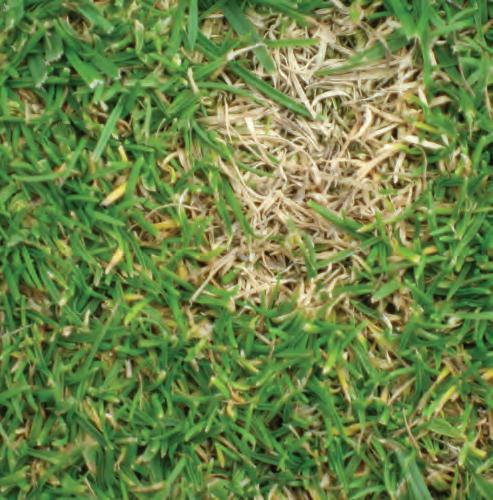










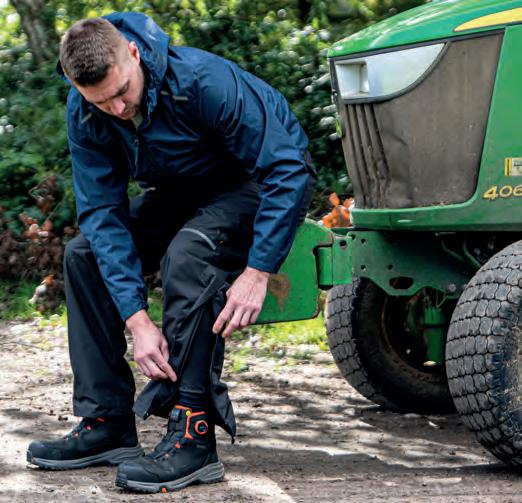
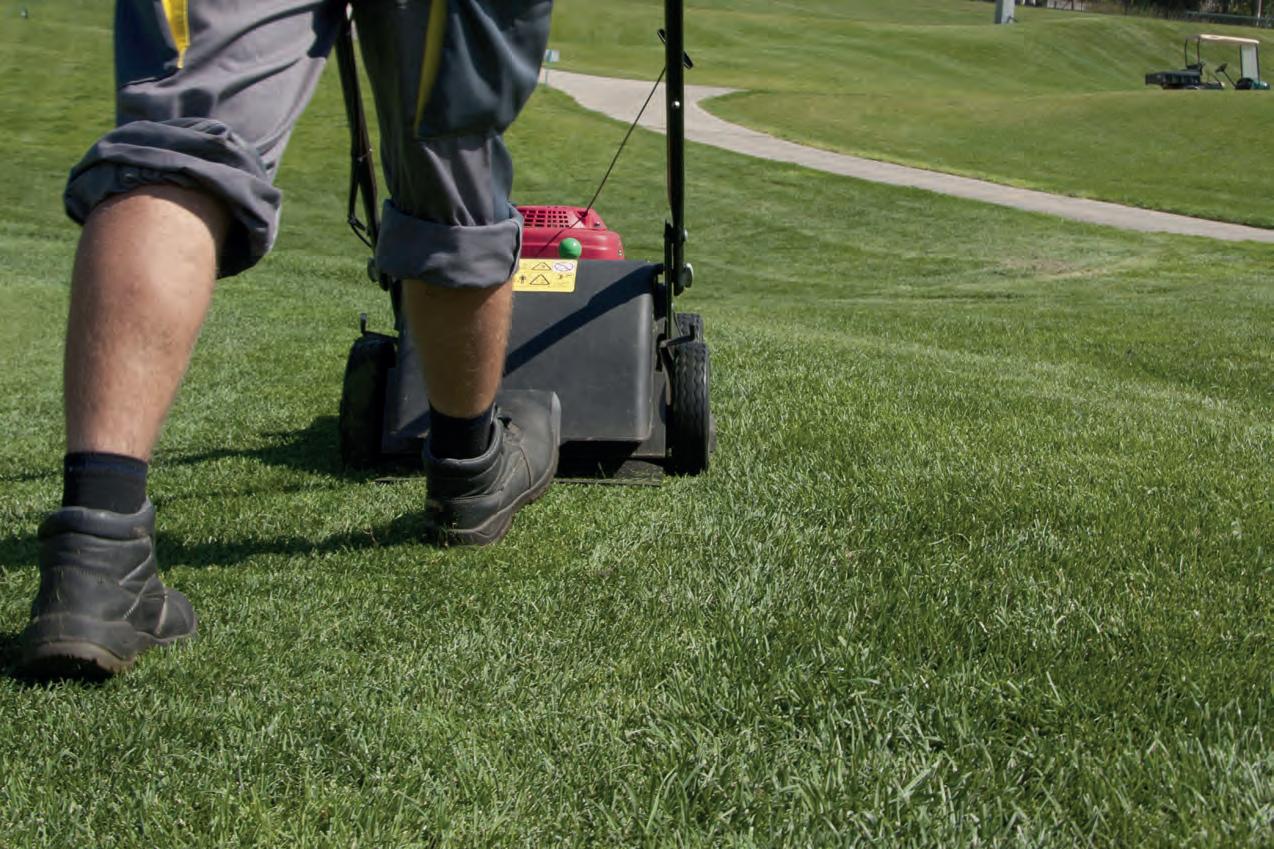

Despite accolades and accomplishments, many of us can find ourselves sometimes questioning our worth. This phenomenon, known as imposter syndrome, affects many people within our industry.
It is the nagging feeling of self-doubt, fearfulness of job security and where one believes success is based on good fortune not skill.
First described in 1978 by psychologists Pauline Rose Clance and Suzanne Imes, the term was based on their observations of highachieving professionals who, despite their accomplishments, felt like frauds and doubted their abilities which ultimately adversely affected their roles. Research shows that 82% of us in the UK have these feelings right now!
I recently had the opportunity to discuss this topic with Sami Strutt, the new Education Director at the Bernhard Academy and her belief that building skills and knowledge
through continued learning can help to overcome this phenomenon.
Sami reminisced, “A recent situation reminded me of this phenomenon. I had organised a training day and had spoken to this particular turf manager just the week prior. He was extremely excited to be attending, but on the day of the session he did not show. I rang him the day after as I was concerned, only to be told; ‘Sorry, I couldn’t attend, a lorry delivery of topdressing, which should have been delivered last week, had to be re-scheduled for yesterday (the training day), and I needed to remain on site to make sure all went smoothly.’ I asked if his deputy was working, only to be told, ‘Yes, but I wanted to make sure it went in the right place.”

This prompted a discussion between us about the perception of their actions on others and how it exposed some tell-tale signs of negative thoughts and a potentially harmful mindset:
• Shows the club they have a team which is solely reliant on the course manager’s presence, and that the team are helpless without him!
• Lack of trust for his deputy.
• Lack of development for his deputy (at least send the deputy to the training!).
• Demonstrates that his learning and betterment is not as important to him as a simple delivery.
• Builds false affirmation that he is indispensable (this increases his personal stress, which is not healthy for either himself, the team and the club he works for).

• Always being the ‘answer person’ or the ‘go to person’ can become unhealthy and detrimental to well-being, not to mention being damaging to the club if no one else has the answers!
• Unwittingly, these actions perpetuate the belief of indispensability for the next generation.
Sami added, “We all need to build confidence and personal resilience by empowering ourselves through learning new skills. Above all, we need to value and appreciate the time spent on further development so that we can combat negative feelings and thoughts through education and upskilling in its many forms.”









































It is a proven fact that building your knowledge and skills (personal and professional) can significantly help reduce the negative feelings of stress and improve wellbeing.
Here are a few ways it can be effective-
• Validation of Competence
By actively developing and honing your skills, you provide yourself with tangible evidence of your abilities, which can counteract feelings of inadequacy.
• Positive Feedback
Seeking and receiving constructive feedback. Mentors and colleagues can help you see your strengths more clearly and build confidence in your abilities.
• Continuous Learning
Engaging in continuous learning and professional development keeps you updated and relevant in your field, which can reduce self-doubt and enhance self-assurance.
• Achievement Recognition
Documenting and reflecting on your achievements can serve as a reminder of your capabilities and progress, helping to silence the doubts that imposter syndrome often fuels.
• Growth Mindset
Adopting a growth mindset, where you view challenges and understanding as opportunities to learn and grow, can shift your focus from fearing failure to embracing improvement.
We all recognise that building confidence is a gradual process. As an industry, we must begin to appreciate that time spent learning new skills is vital. Improving our professionalism through education can significantly help manage and reduce the impact of imposter syndrome, increase your wellbeing and bring value to you, your team and the organisation you work for.
It just leaves me to thank Sami for her time and spirited discussion about what can sometimes be a ‘taboo’ subject.
Article by Phil Helmn.
















How do we respond to the challenge of cynicism in the workplace?
Trainer and Conference Speaker Frank Newberry, has been helping greenkeepers, gardeners and groundsmen to be more successful since 1989. In this article he also lists ten of his articles (available online) that support the need for us all to be less cynical and more open to colleagues, more helpful perhaps to others in our profession.
The full title of this article is of course a quotation by the Irish writer Oscar Wilde (1854 - 1900) which reads “A cynic is a man who knows the price of everything, and the value of nothing.”
Such elegant condemnation in so few words!
When I first read the quotation as a young person, I was captivated by its brevity and wit. Sure it is negative, but it is such an elegant condemnation of cynicism - in so few words!
I still hear this Wilde quotation being used, usually in a TV play, set in the Victorian era, or it is used as an insult or a put-down in a political debate.
A while back at work, a colleague of mine heard a more positive quotation about cynics on the radio – something I found I could use in my life; it describes a cynic as follows:
‘’A cynic, after all, is a passionate person who does not want to be disappointed again.’’
The author of the quotation was an orchestra conductor
My friend thought the source of this quotation was an orchestra conductor called Ben Zander (b.1929), but I have noticed recently that his exwife and friend, Rosamund Stone Zander (19422023), is also credited with the words.
My method for dealing with cynical people was to avoid them!
Now, until this discovery, my method for dealing with cynical people was to avoid them! Personally, there have been times when I did not want to be exposed to a cynic’s negative, often sarcastic remarks - especially when they cleverly trick me by feigning to make a positive statement at the start, and then close on a negative, pessimistic thought.
Most cynics I have met want their elegant remarks to excuse their inertia or lack of energy when asked to take any action. I have had enough of their lack of faith, their rejection of anything positive, and their inability to be optimistic (about anything).
Previously, the best response I had was to say, ‘Sometimes it’s hard not to be cynical’. This would shut them up for a while - it may have been a surprise for them to have their cynicism accepted or validated in such an understanding way!
Cynicism is not like criticism
But, cynicism is not like criticism. Cynicism communicates a contemptuous or mocking attitude of another person’s ideas or solutions; criticism can be seen as negative, but if done well, criticism can have positive outcomes e.g. at performance reviews.
In my line of work as a trainer and consultant, my clients want me to bring some positivity and optimism with me. Yes, they want me to be realistic and critical of things that have gone wrong. But many of them really want me to deal with the negativity of their key players at work. Some of my clients have grown tired and depressed trying and failing to motivate their teams. No surprise really. Once cynicism and/ or negativity is shown at the higher levels in organisations, it gives people throughout the organisation permission to be cynical as well. What can I, an outsider, do about this?
Well, Rosamund’s thinking showed me that I can do something. She advises that when you or I are with a cynic “the secret is not to speak to people’s cynicism, but to speak to their passion.”
Start with yourself. When you look at yourself in a mirror, do you see a cynic? Someone others may be avoiding and blaming? Or, do you see a passionate person lurking underneath? Someone who has experienced trials and disappointments sure, but someone who is ready to learn from them, and help others who are going through them now?
Be honest. Maybe you will have to apologise for your past cynicism. I was cynical just once at work and my whole team noticed it and immediately started showing their cynicism. Are you someone who is ready to be a positive role model in the workplace? Are you ready to talk to others about their passions at work?
If you are, then help is at hand! Below are ten articles that you can access online at Pitchcare. com right now. They can help you to be open with others and supportive of their passions at work:
Managing Upwards; parts 1, 2 and 3

transforming-performance-upwards-sideways-and-down-part-1 transforming-performance-upwards-sideways-and-down-part-2 managing-upwards-iii
Can You Change the Future; part 2 can-you-change-the-future-part-ii-painless-presentations
Making the Most of Meetings; parts 1, 2 and 3
making-the-most-of-meetings-at-work-agendas-for-action making-the-most-of-meetings-at-work-part-ii-the-facilitator-role making-the-most-of-meetings-at-work-part-one-the-executivesecretary-role
Speaking Truth to Power speaking-truth-to-power
Persuading People – Words that Work mind-your-language
2024 Frank Newberry. or problem solving please get in touch with Frank at: franknewberry.com

























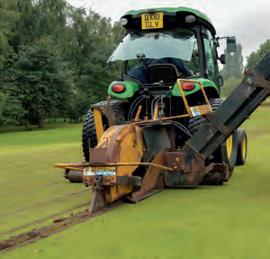






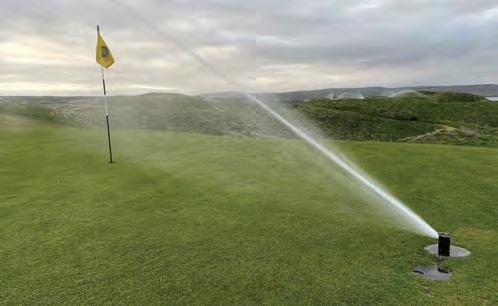





















































TURF










WE ATHER CONDITIONS INCREASINGLY CREATE HAVOC IN M ANAGING SPOR TS PITCHES TO ME ET EV ER HIGHER DEMA NDS OF PL AY ERS FOR CONSISTENT QUALIT Y THROUGHOUT THE YEAR. TURF ADVISOR GIVES YOU INSTANT ACCE SS TO THE DATA TO STAY FORE WA RNED AND TA KE POSITIVE ACTIONS.
Create a personalised dashboard of Turf Advisor weather da ta and tools for your site and proritise management actions.
Rainfall data in uences all ever yday ac tions and justi es your decisionsincluding cancellations.
With Turf Advisor you get rain data for the past days and amounts forecast for the next week. T here’s also a two-week aver age and historic data for the period.
Soil temper ature governs so many management ac tions, as well as plant health and grow th Use the available Turf Advisor data of recent conditions, along with forecasts for coming days.
GROW TH POTENTIAL
Use GP to predict recovery rates from turf damage. Also help pick a fungicide mode of action that best matches your turf grow th – systemic when it ’s active or contac t during slow periods.
• Fr ee to download and use for all greenkeepers, turf managers and agr onomists
• Fully customisable for your location and situation for UK & Ireland



• Adaptable through the season to tackle current challenges
• Suppor t ITM decisions and be tt er day to day planning

Most turf diseases need moisture to develop and spread. Whilst st adium pitch conditions create a unique micr oclimate highly conducive to disease, training grounds and spor ts pitch areas can come under prolonged pres sure that affect s turf health.
EVAP OTRA NSPIRATION
Gives a guide as to how fast pitch surfaces will dr y out af ter rainfall. Combine with local knowledge of drainage and construction
GDD CALCULATOR
Use the Turf Advisor GDD Calculator to tailor turf management action intervals speci c for your site, including fertiliser applications, PG R and fungicide timings.


































































